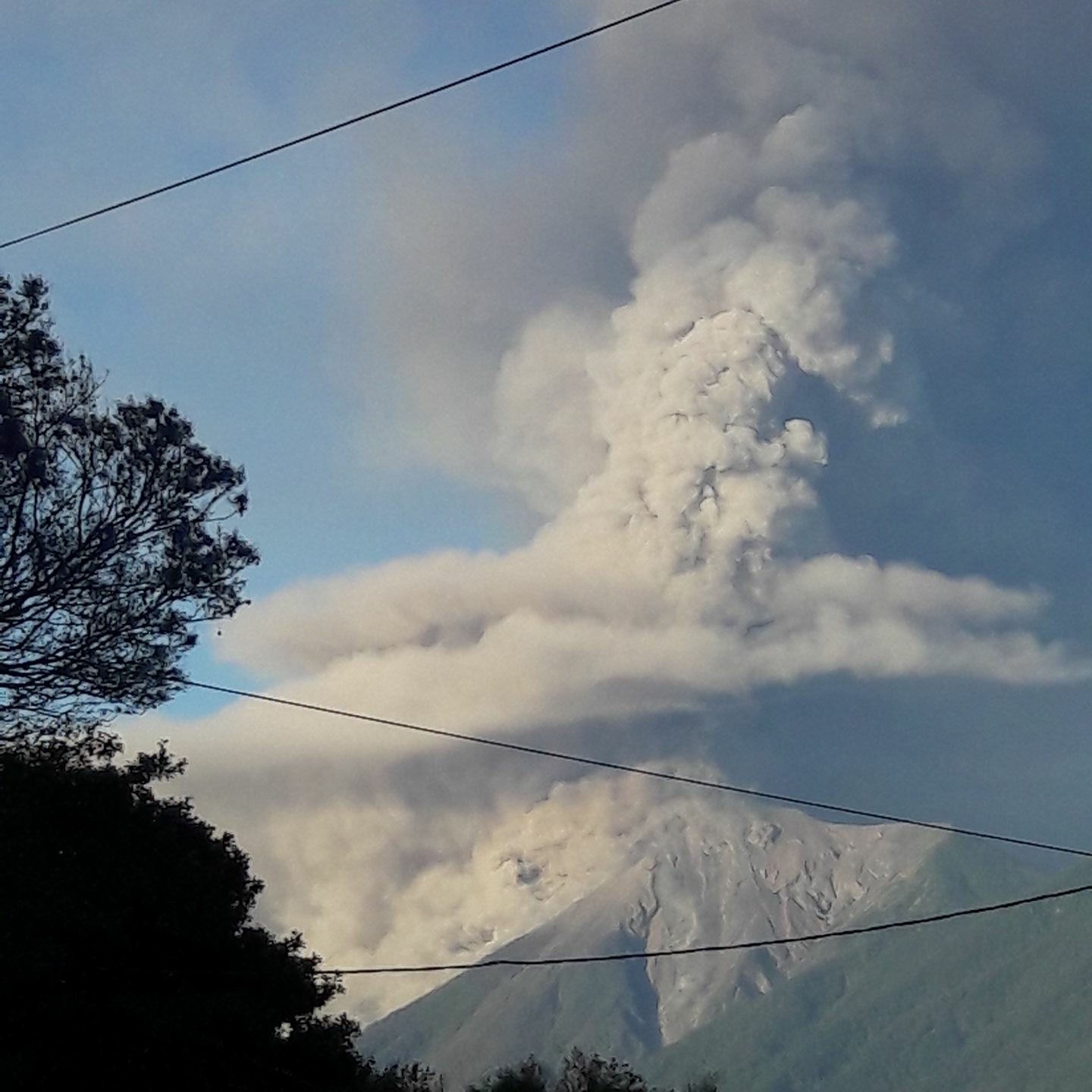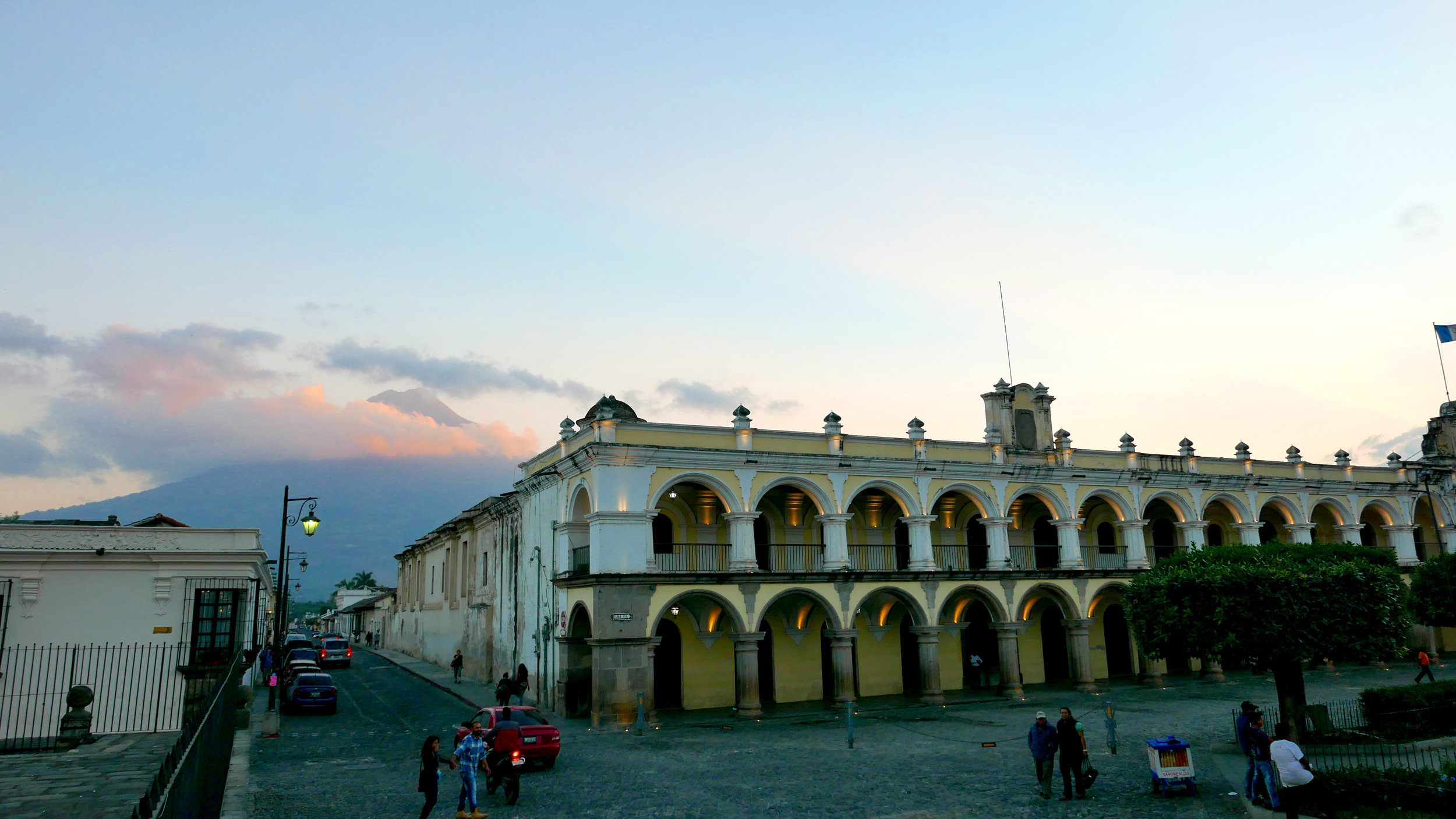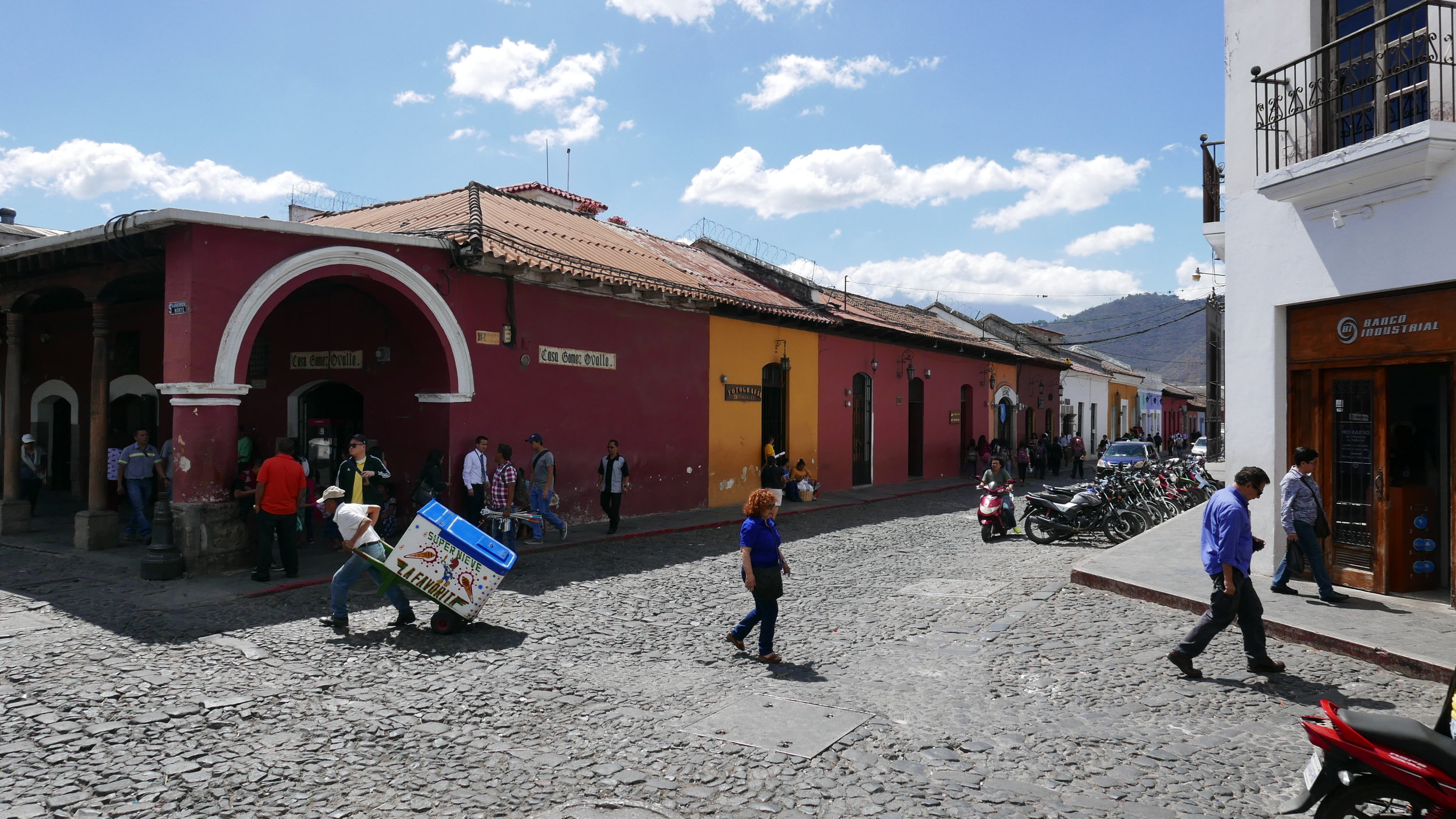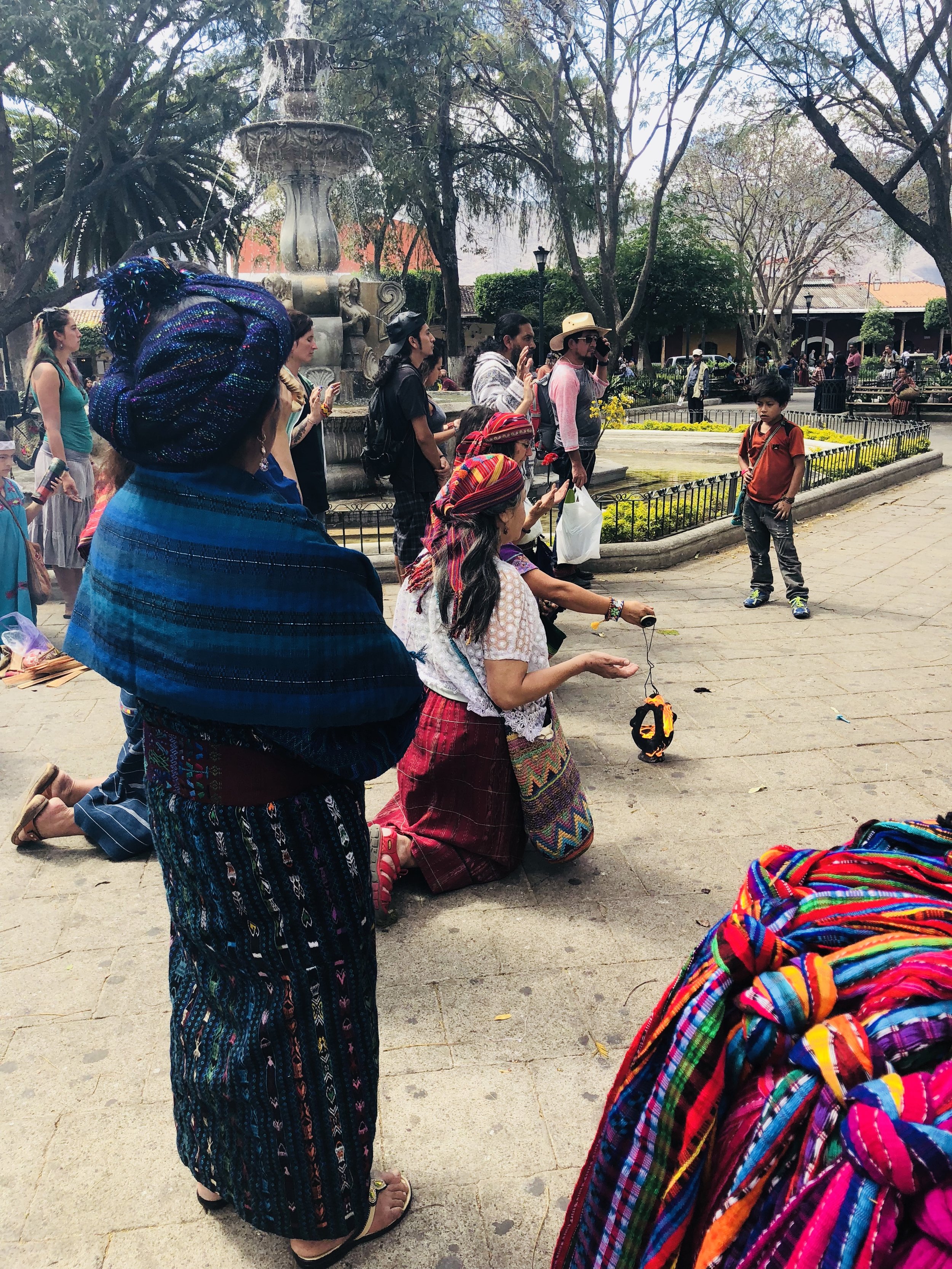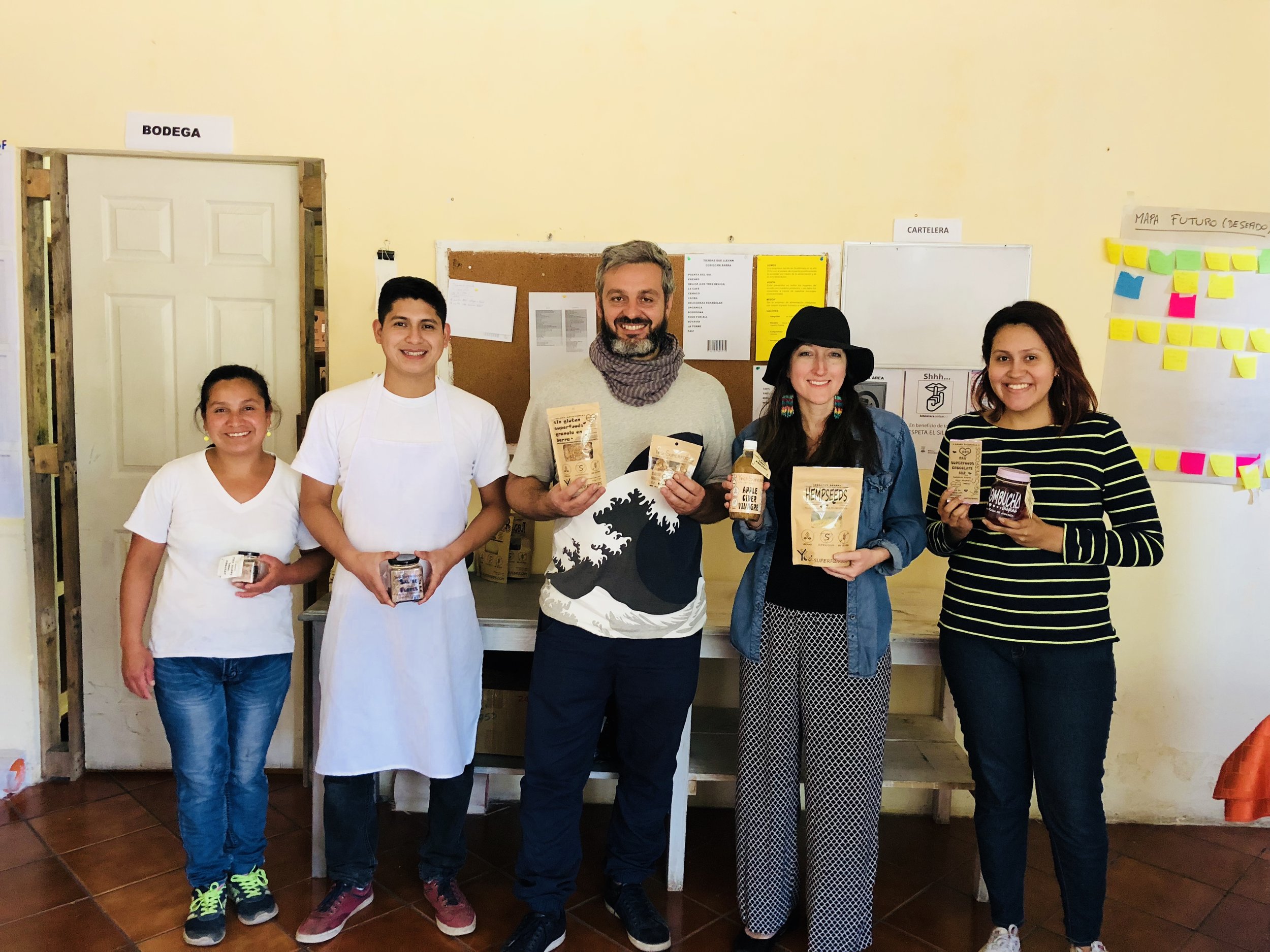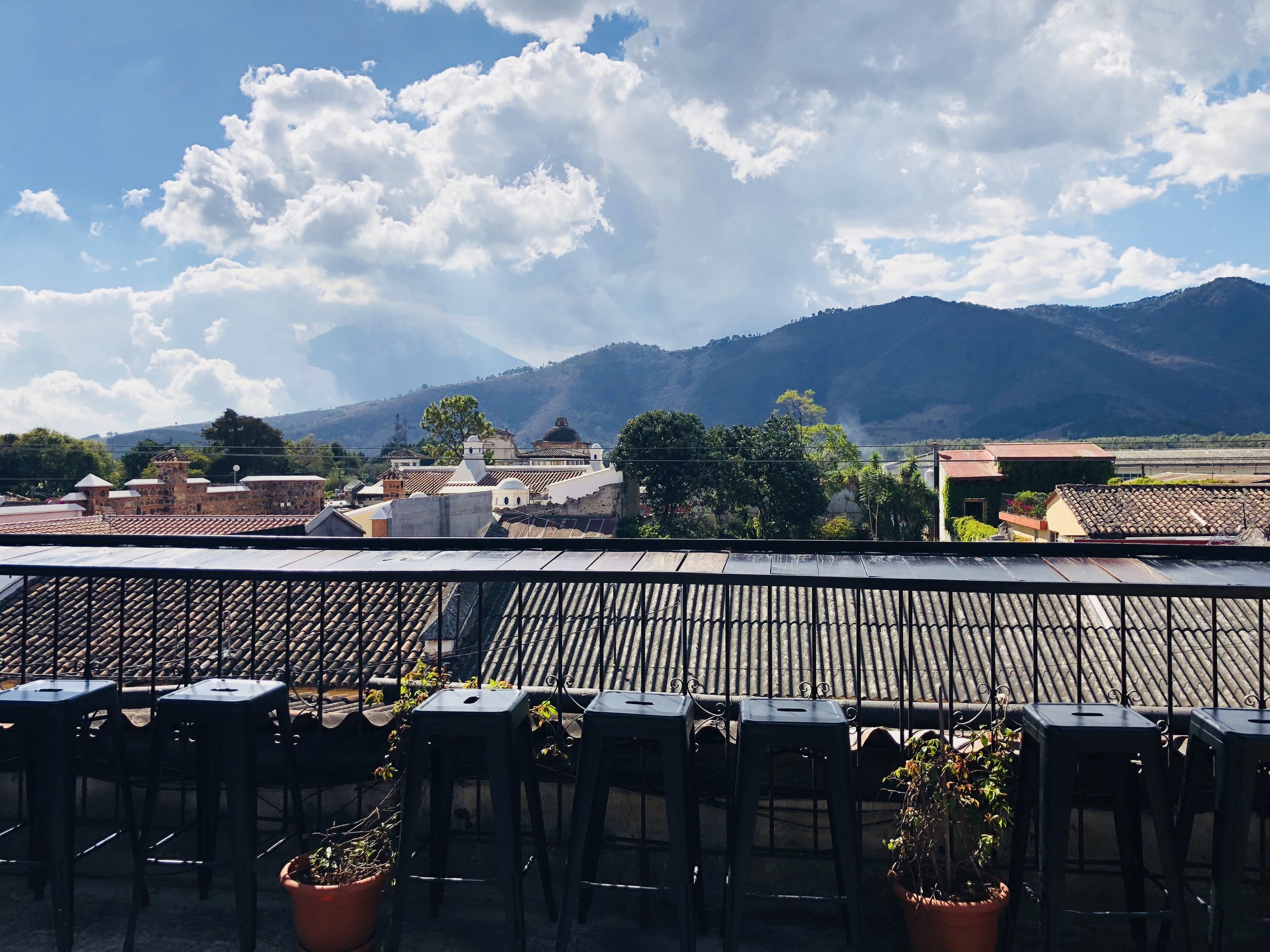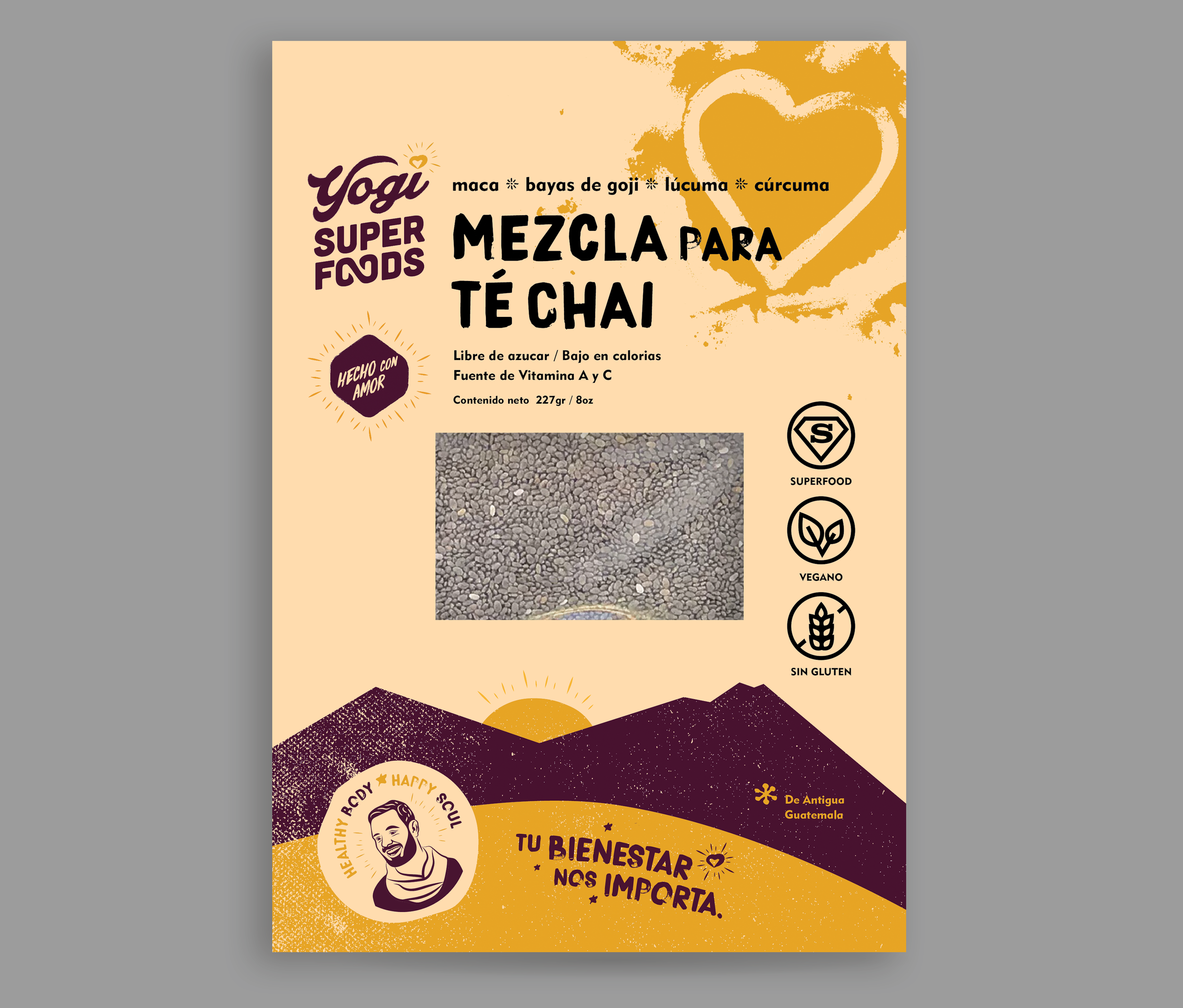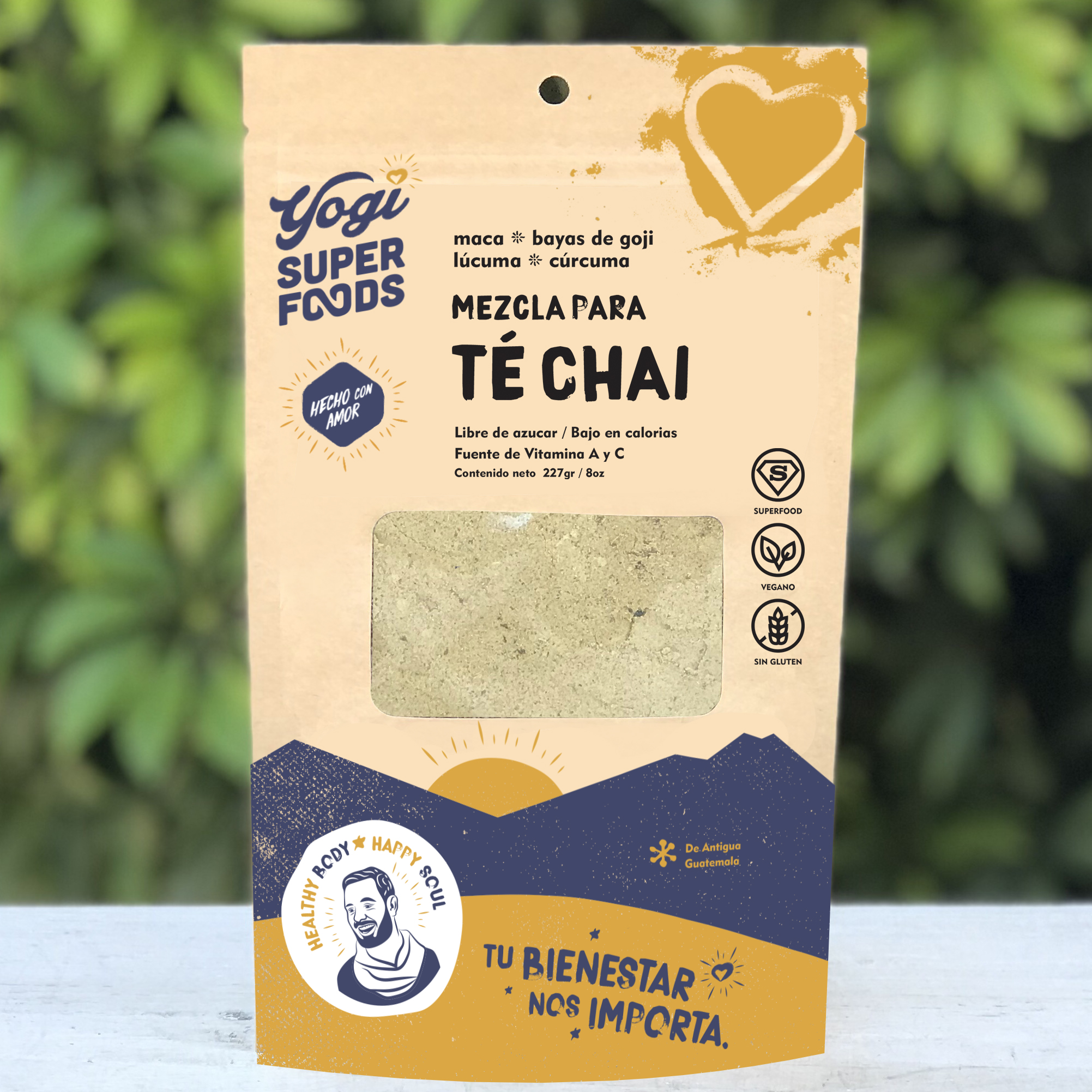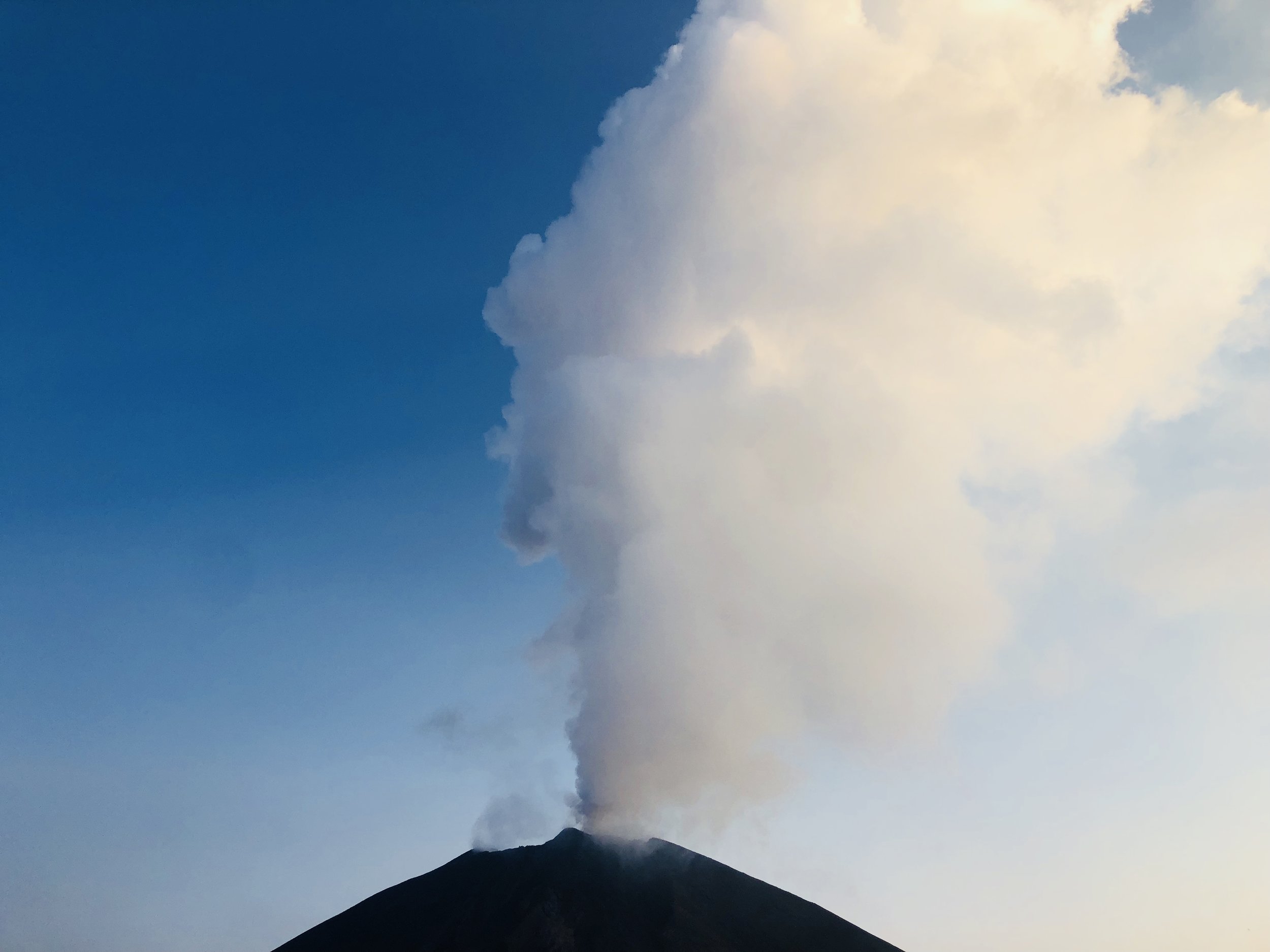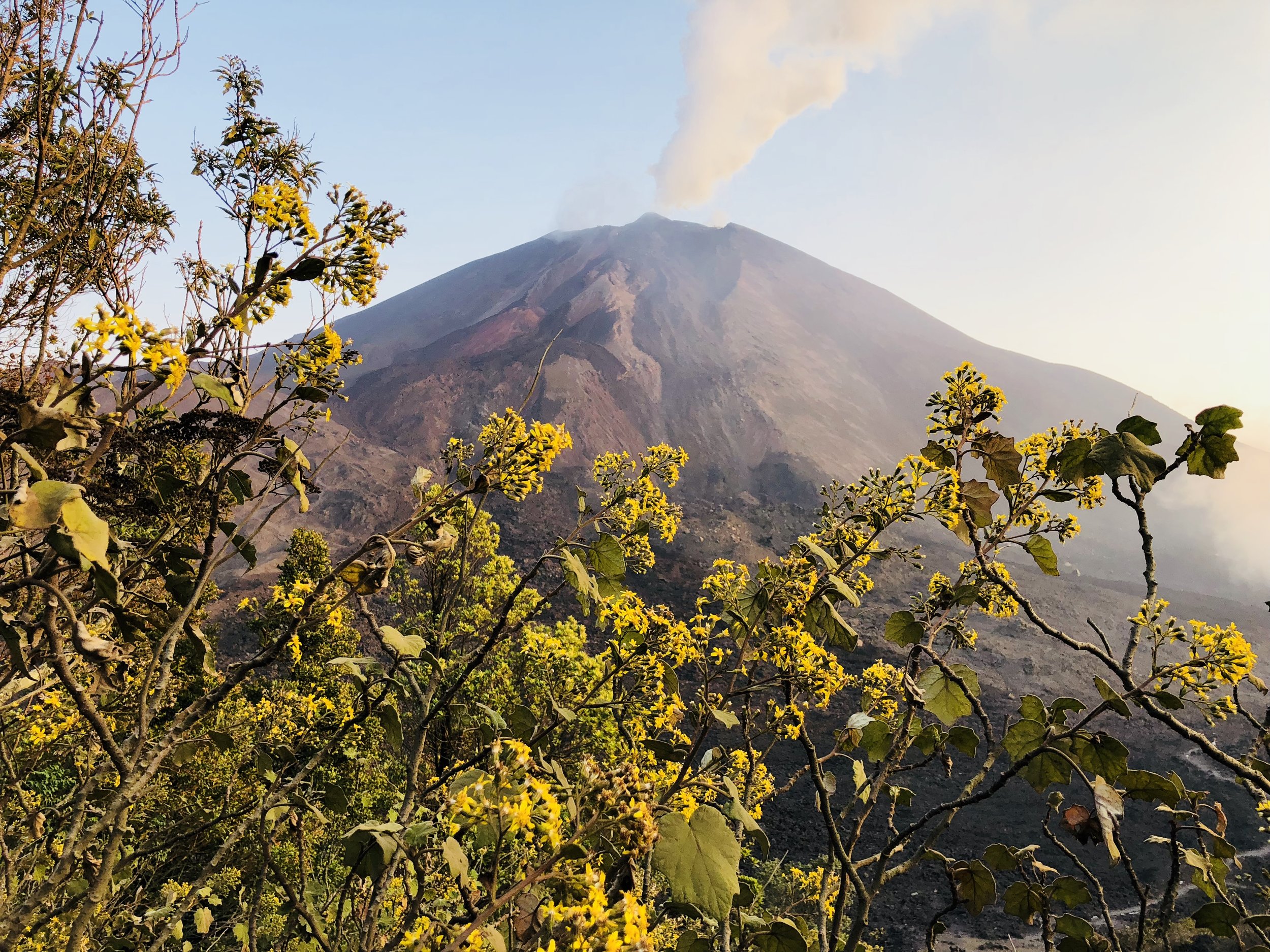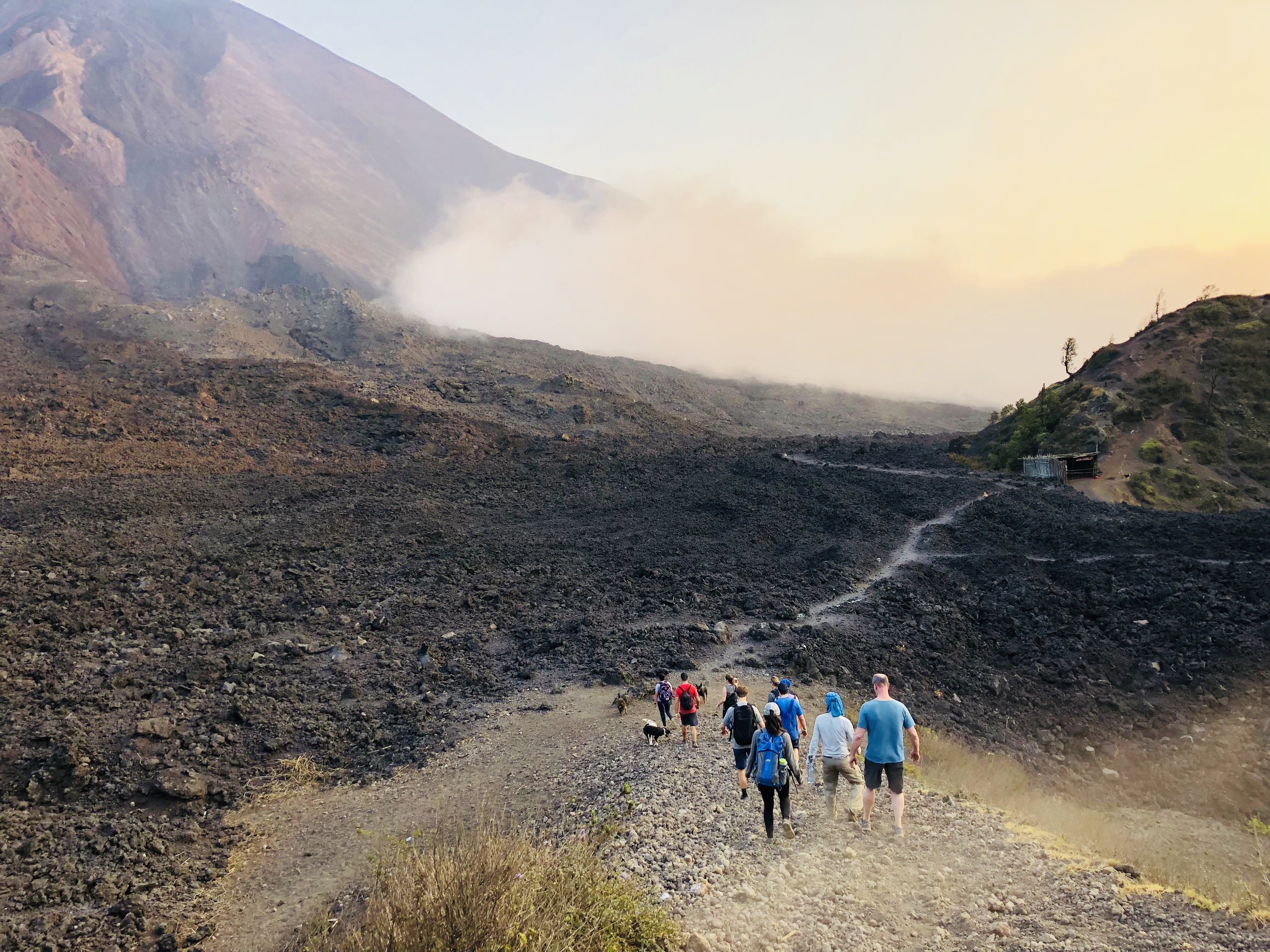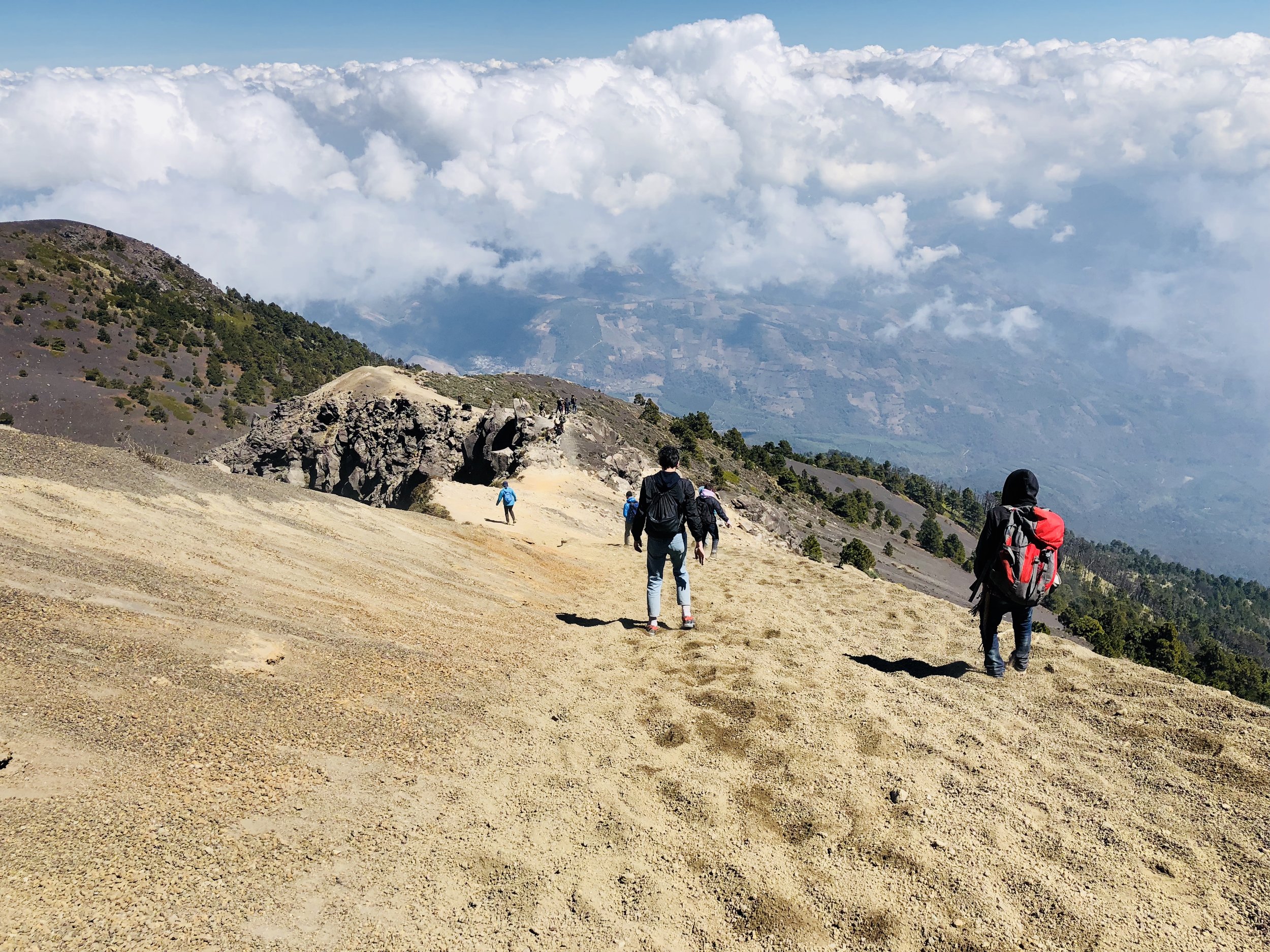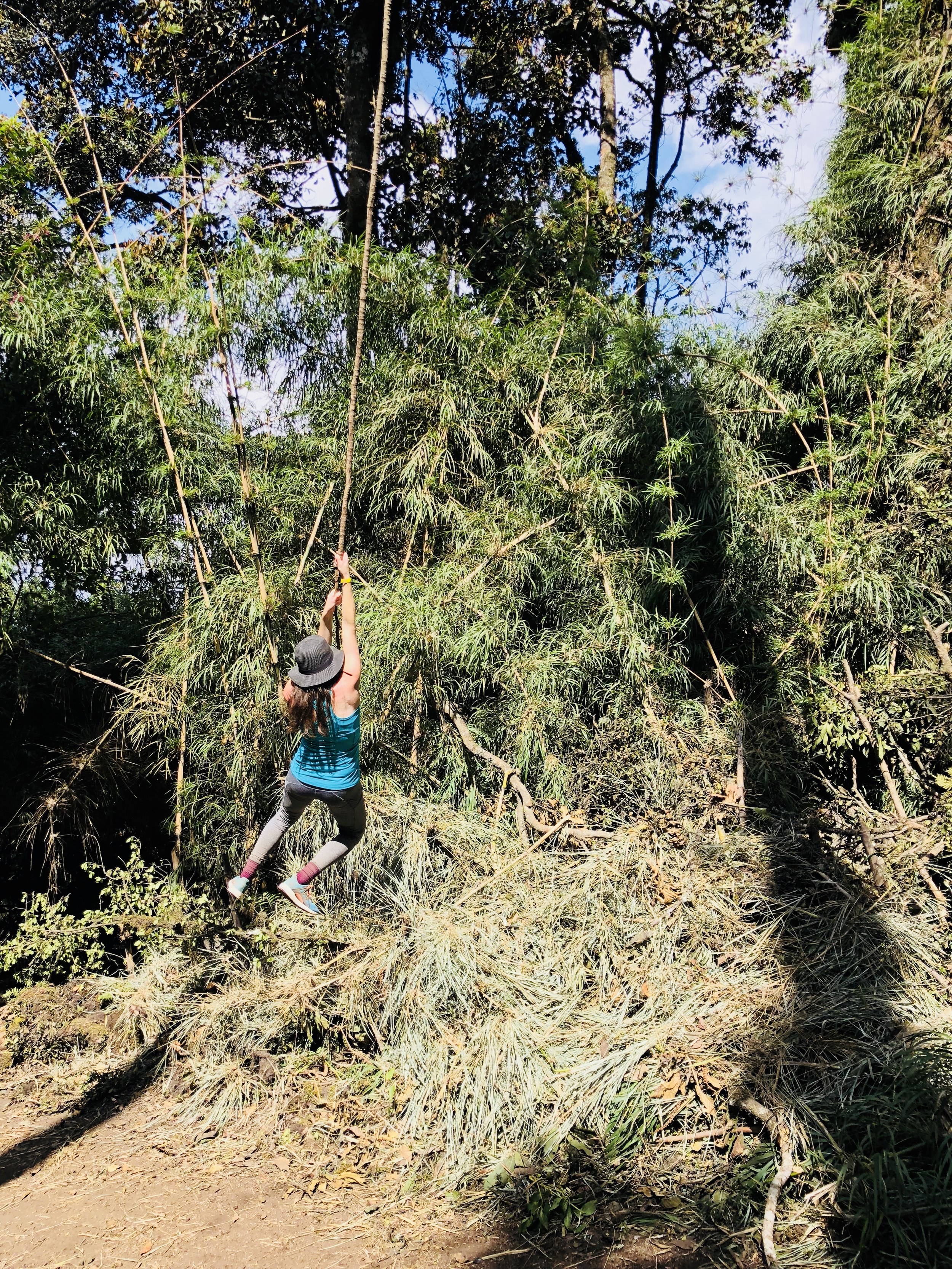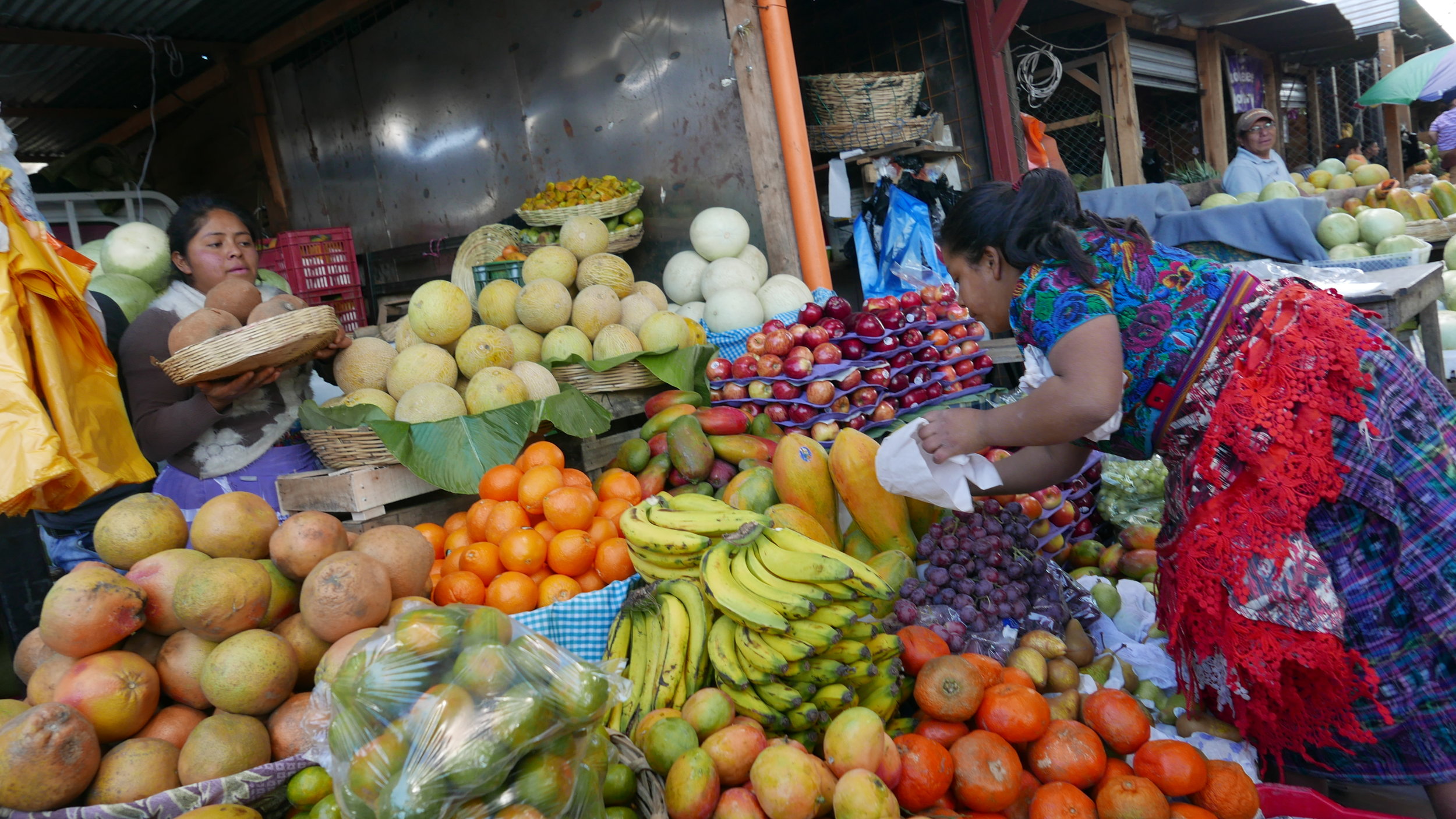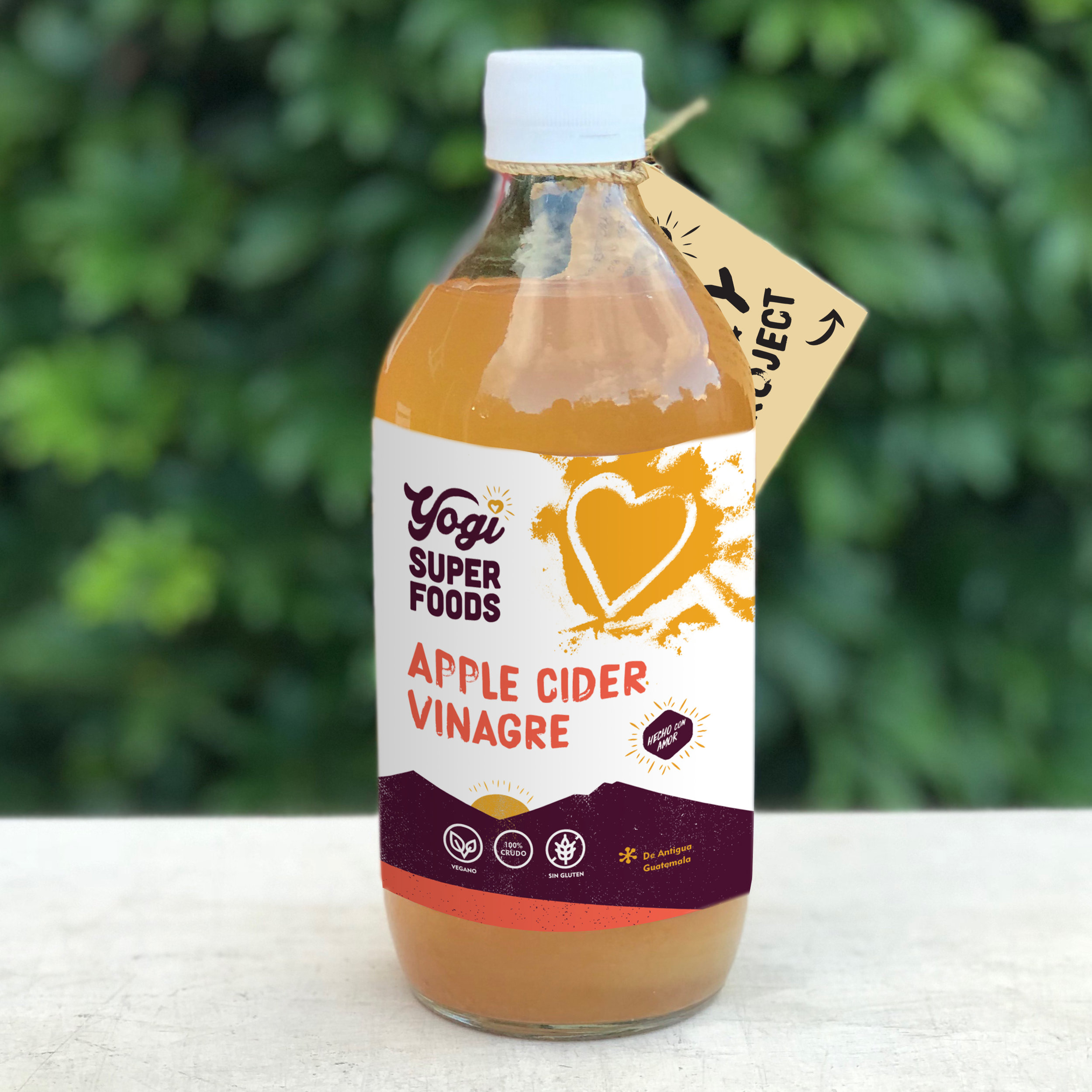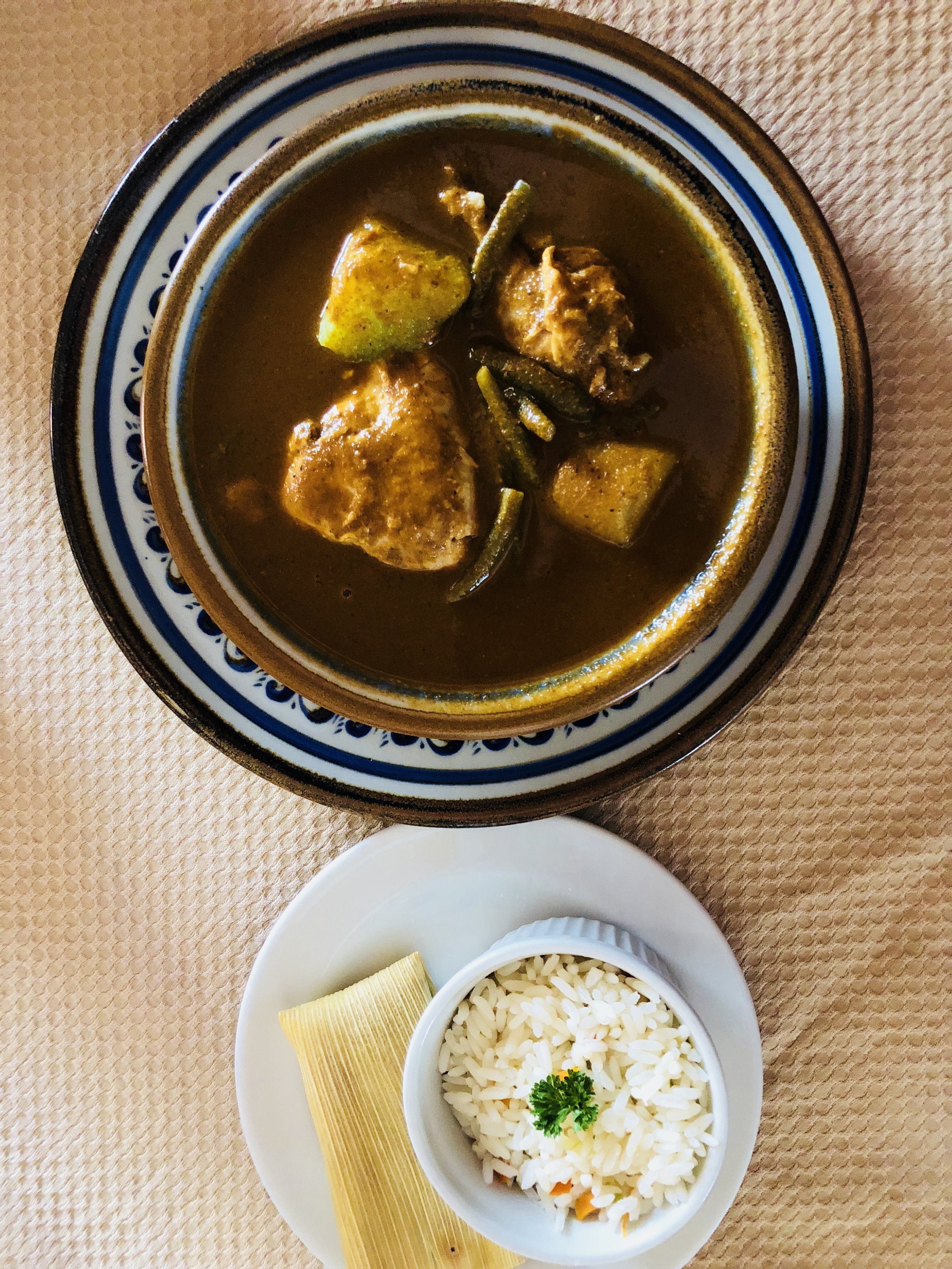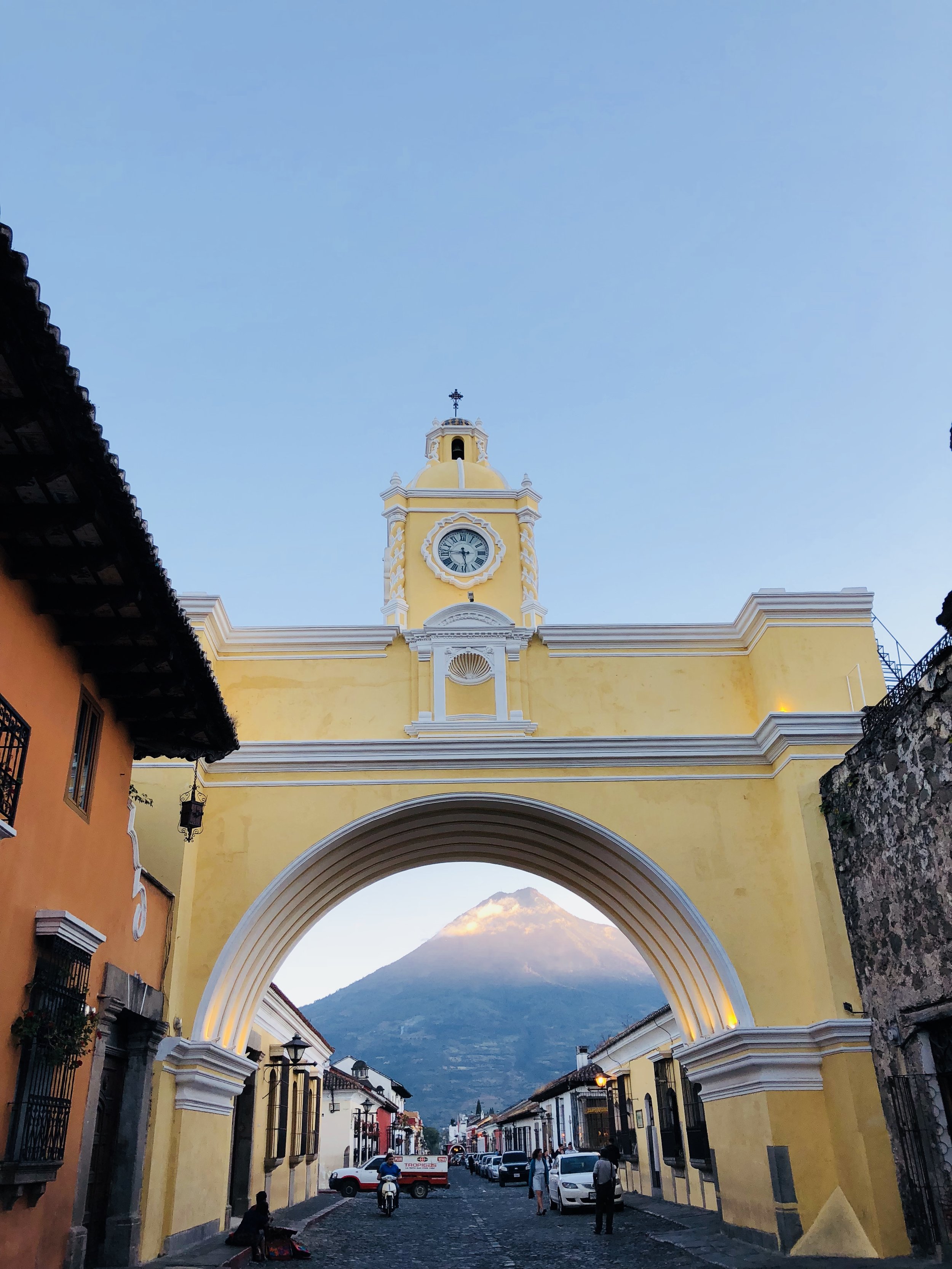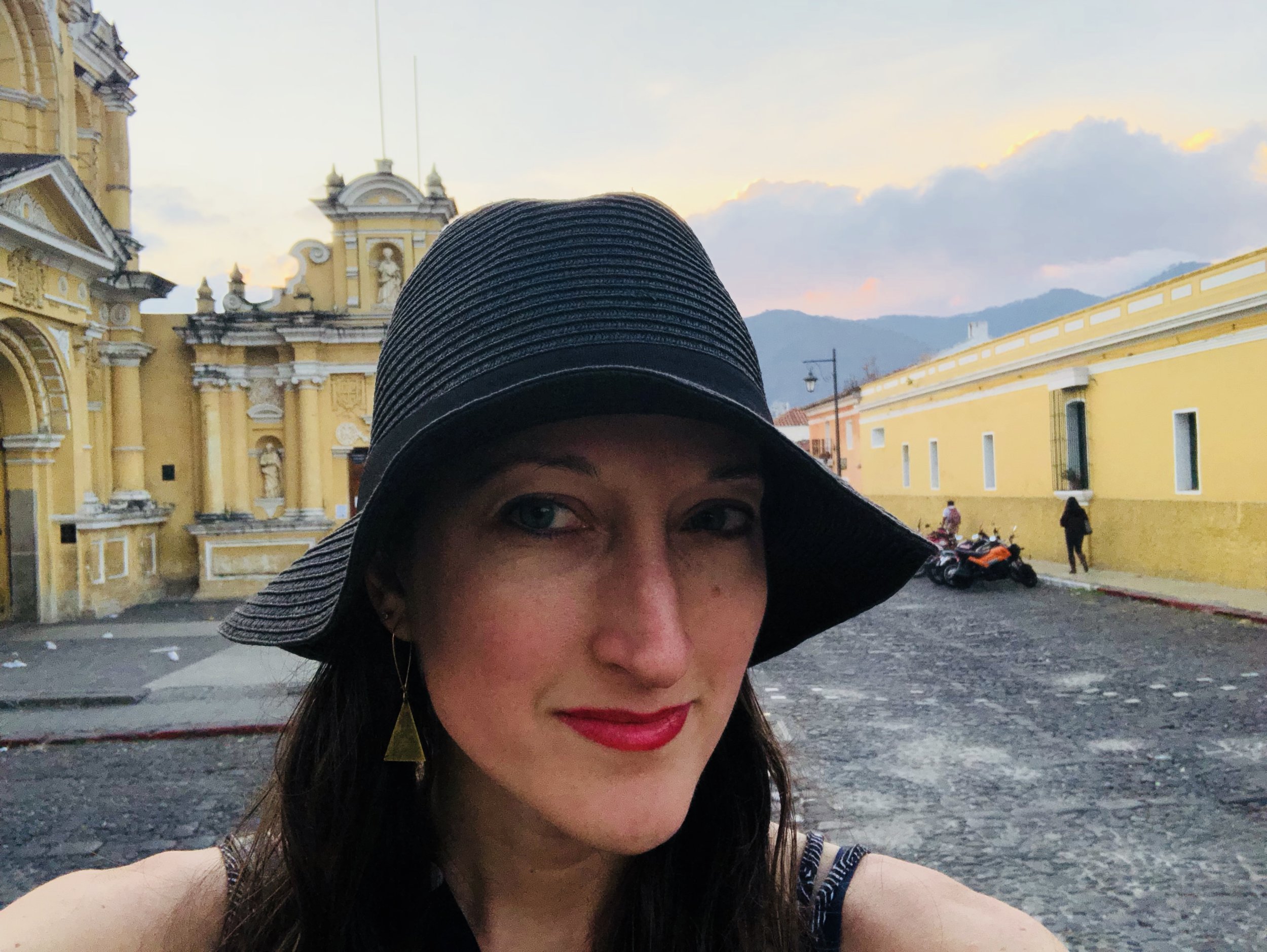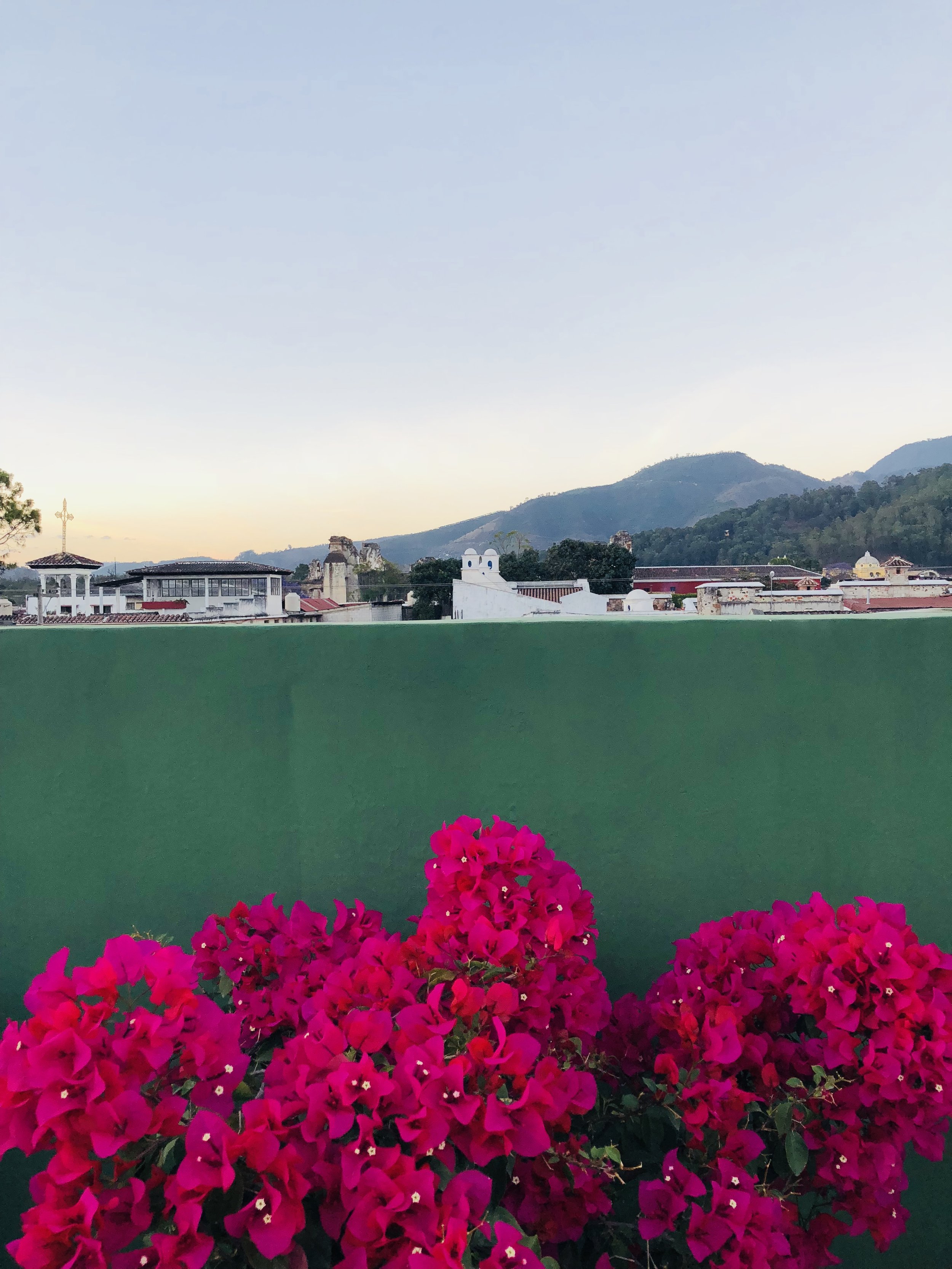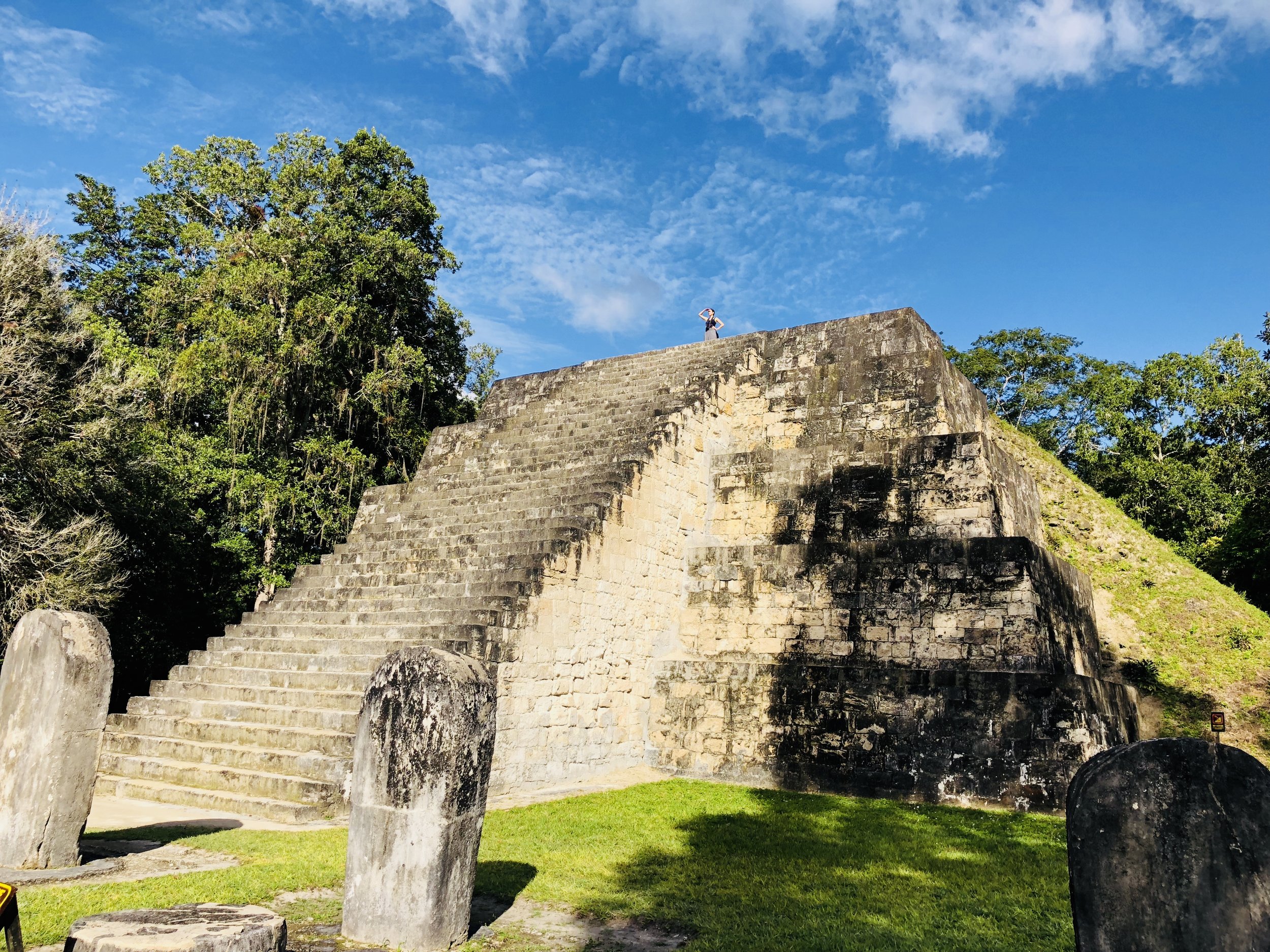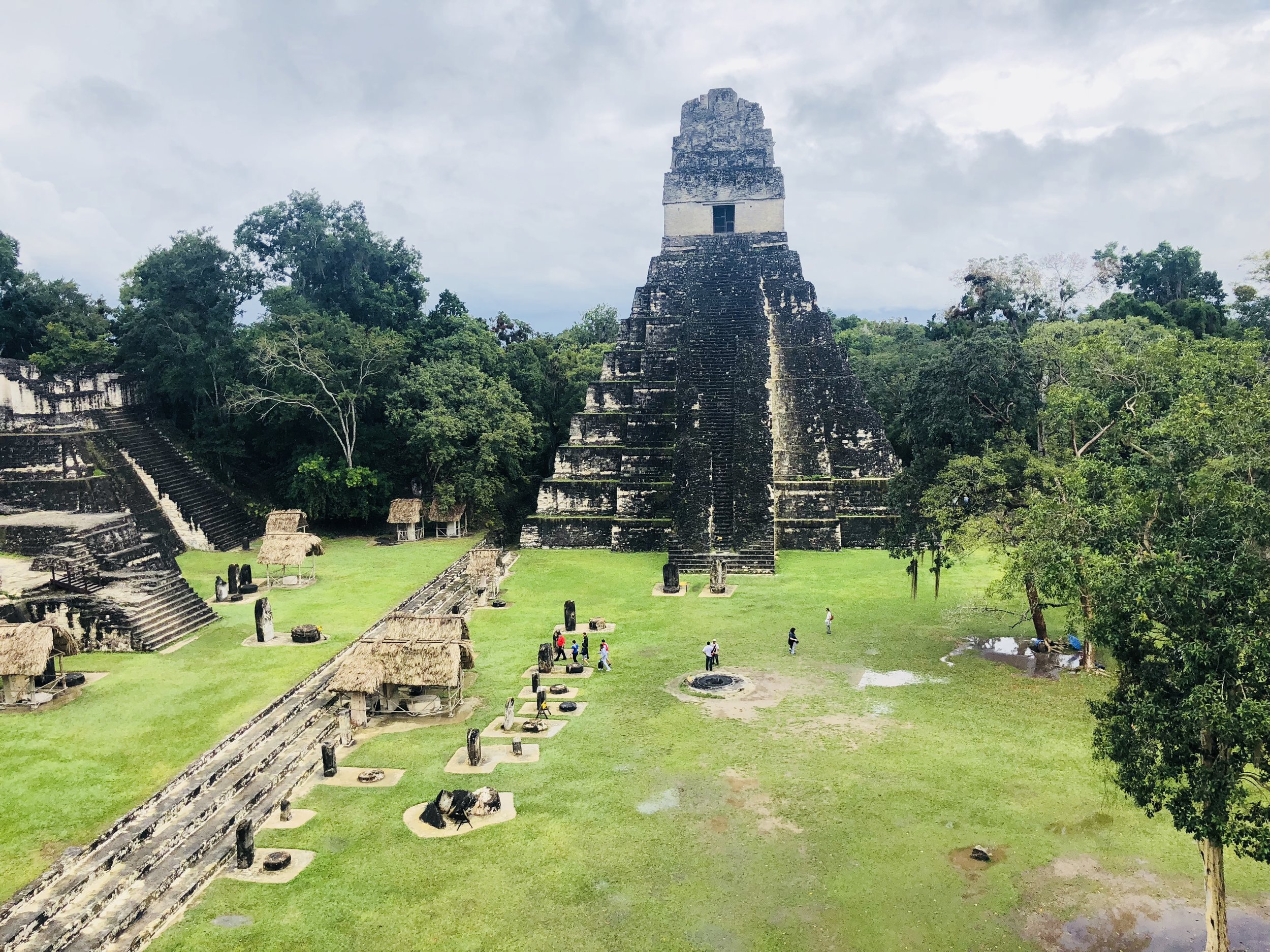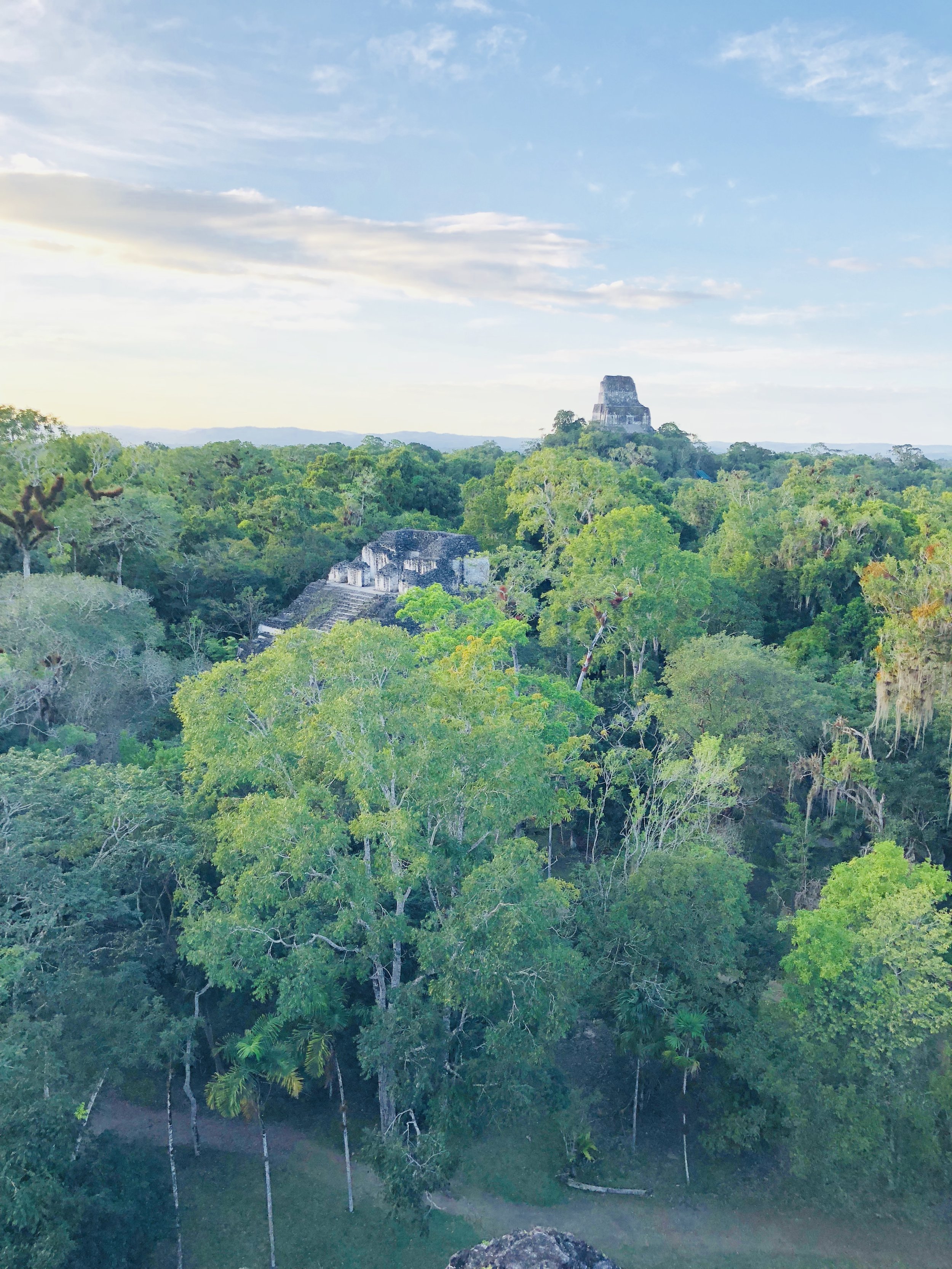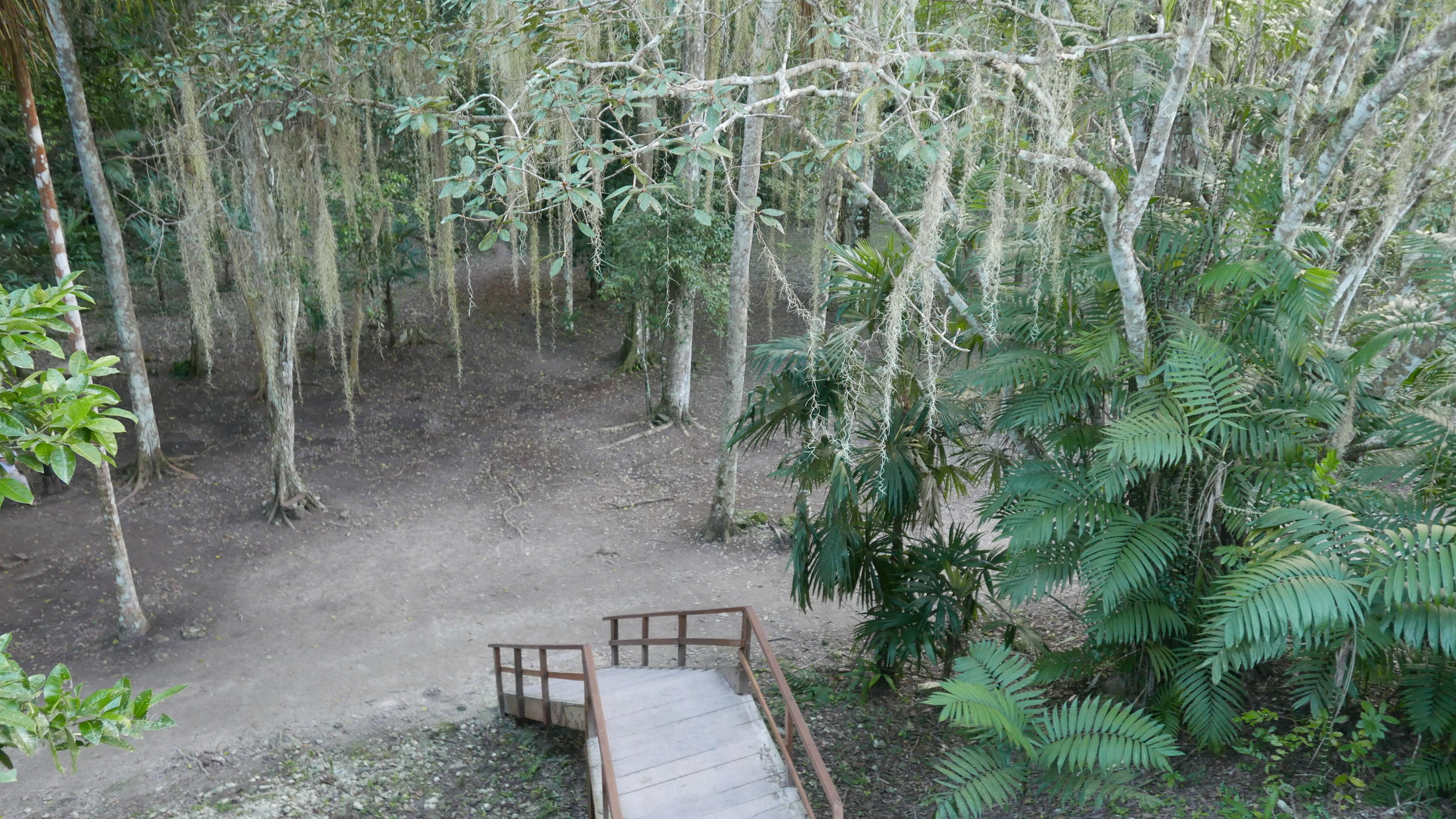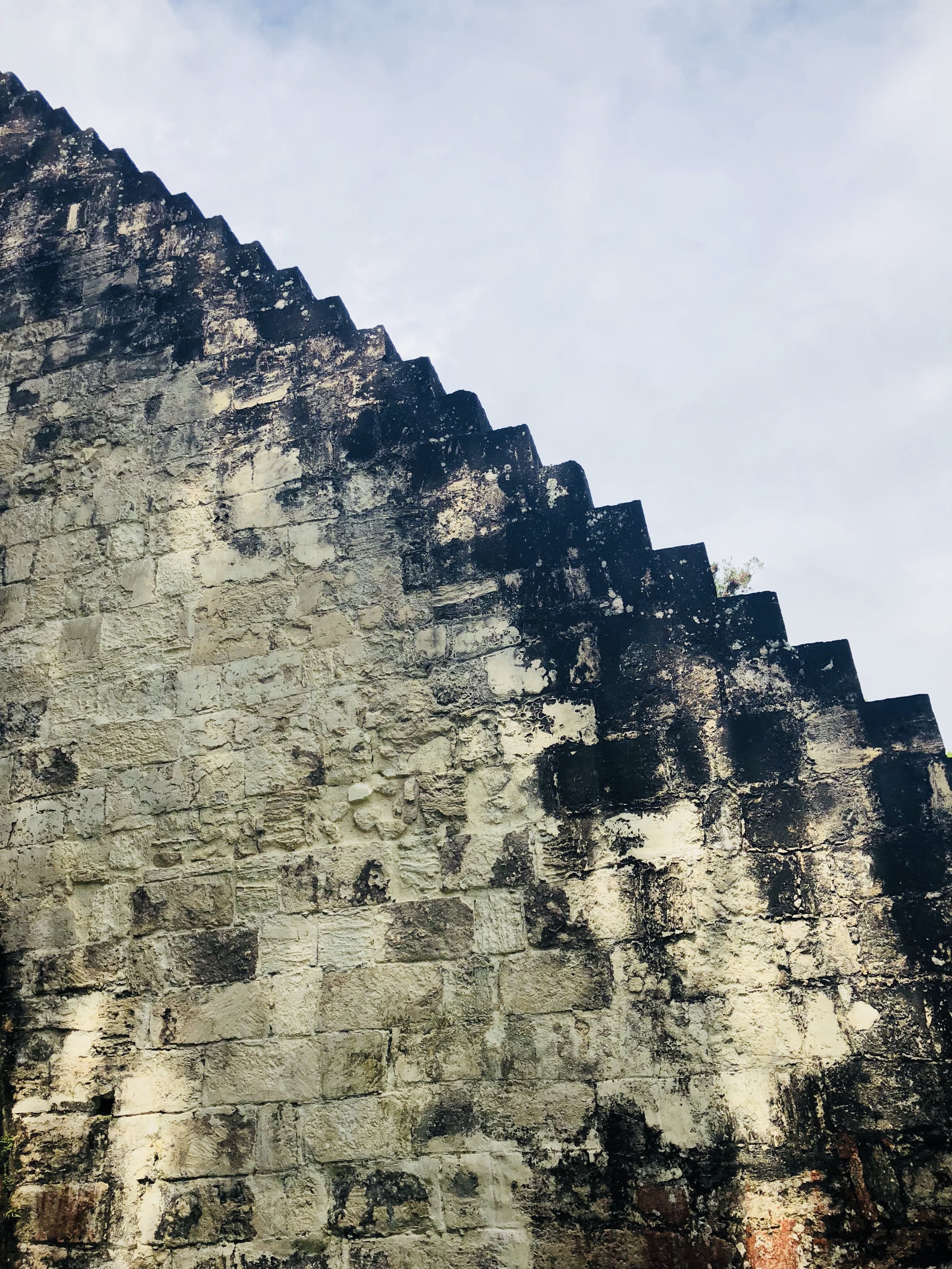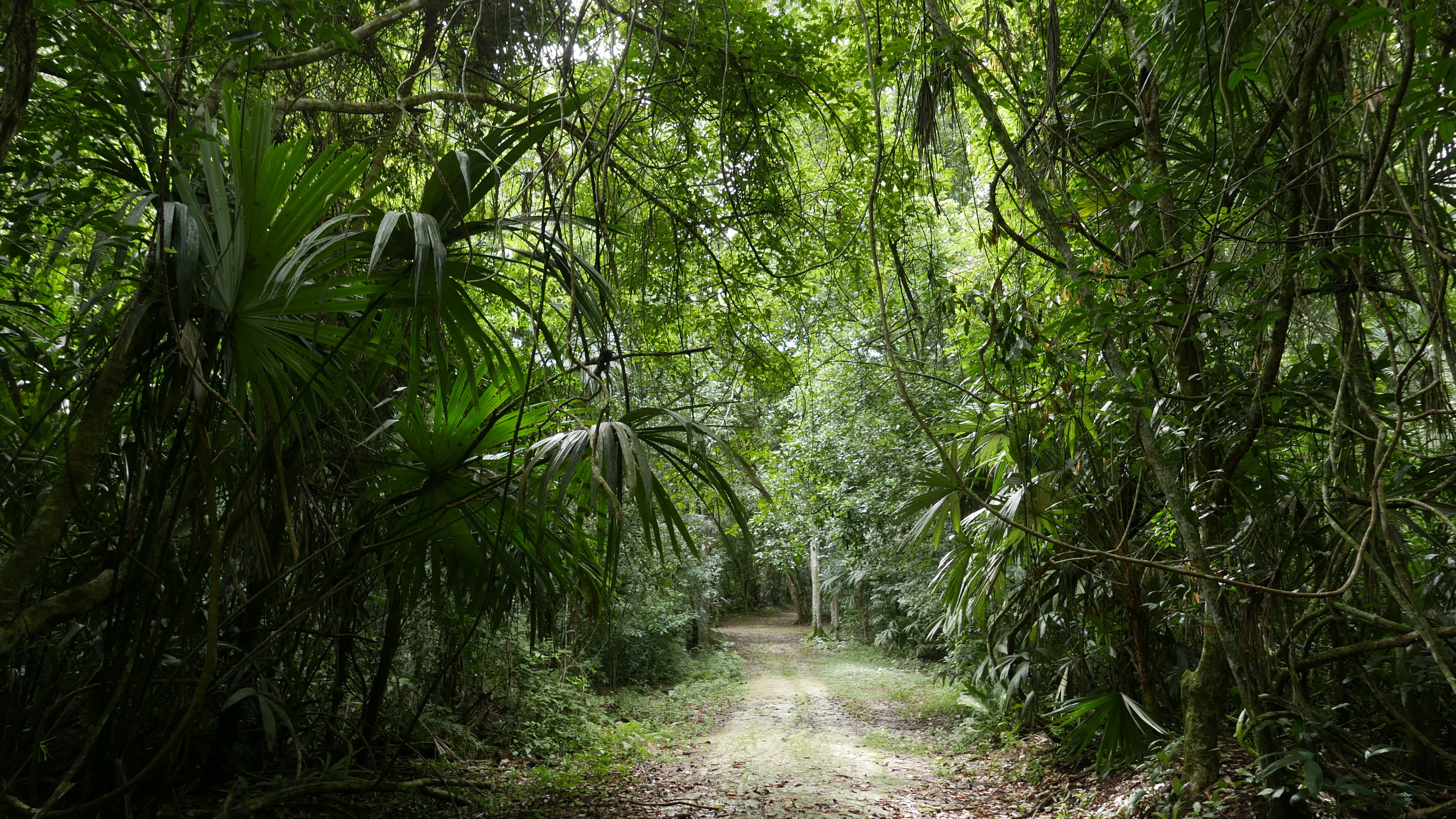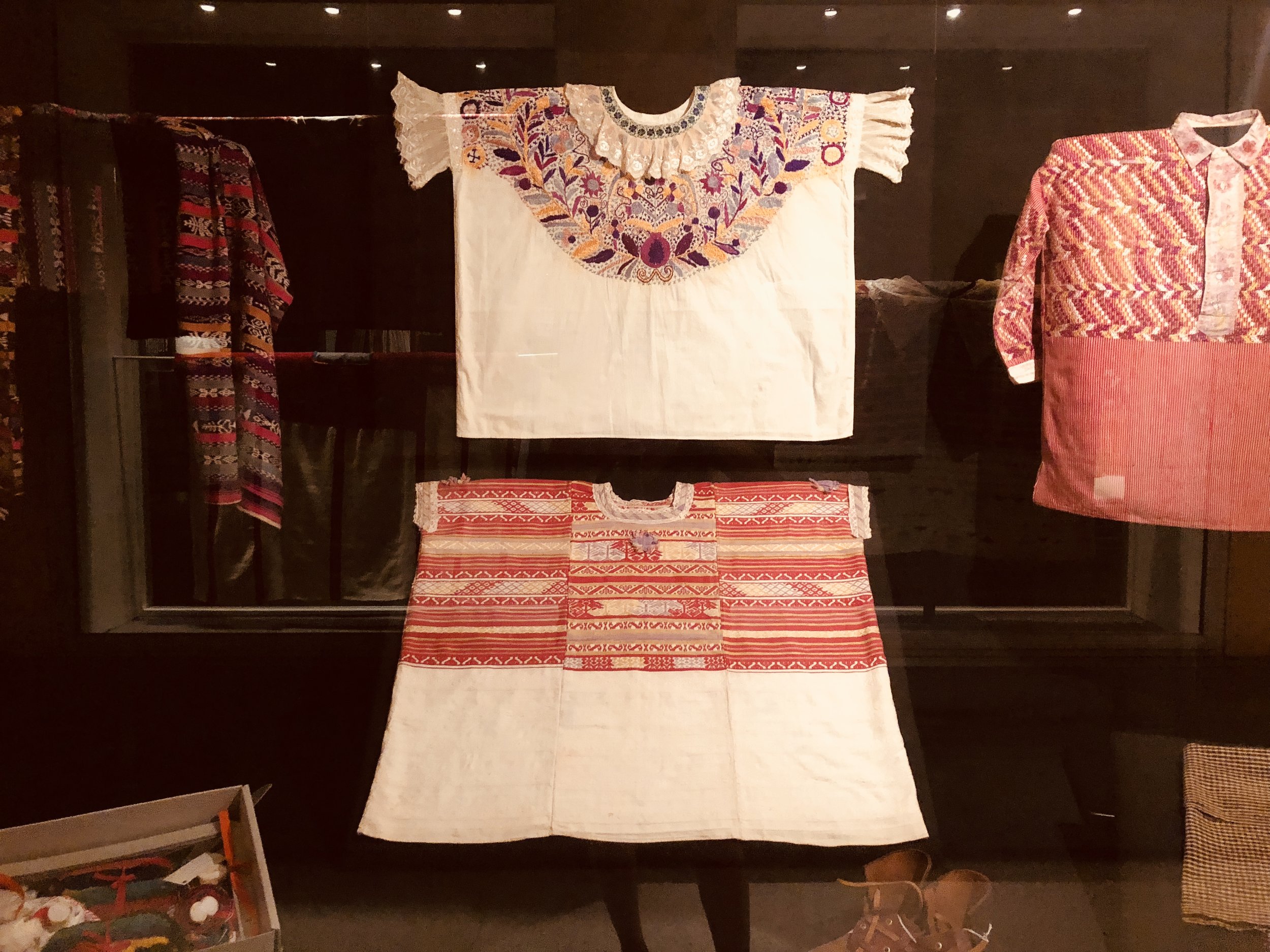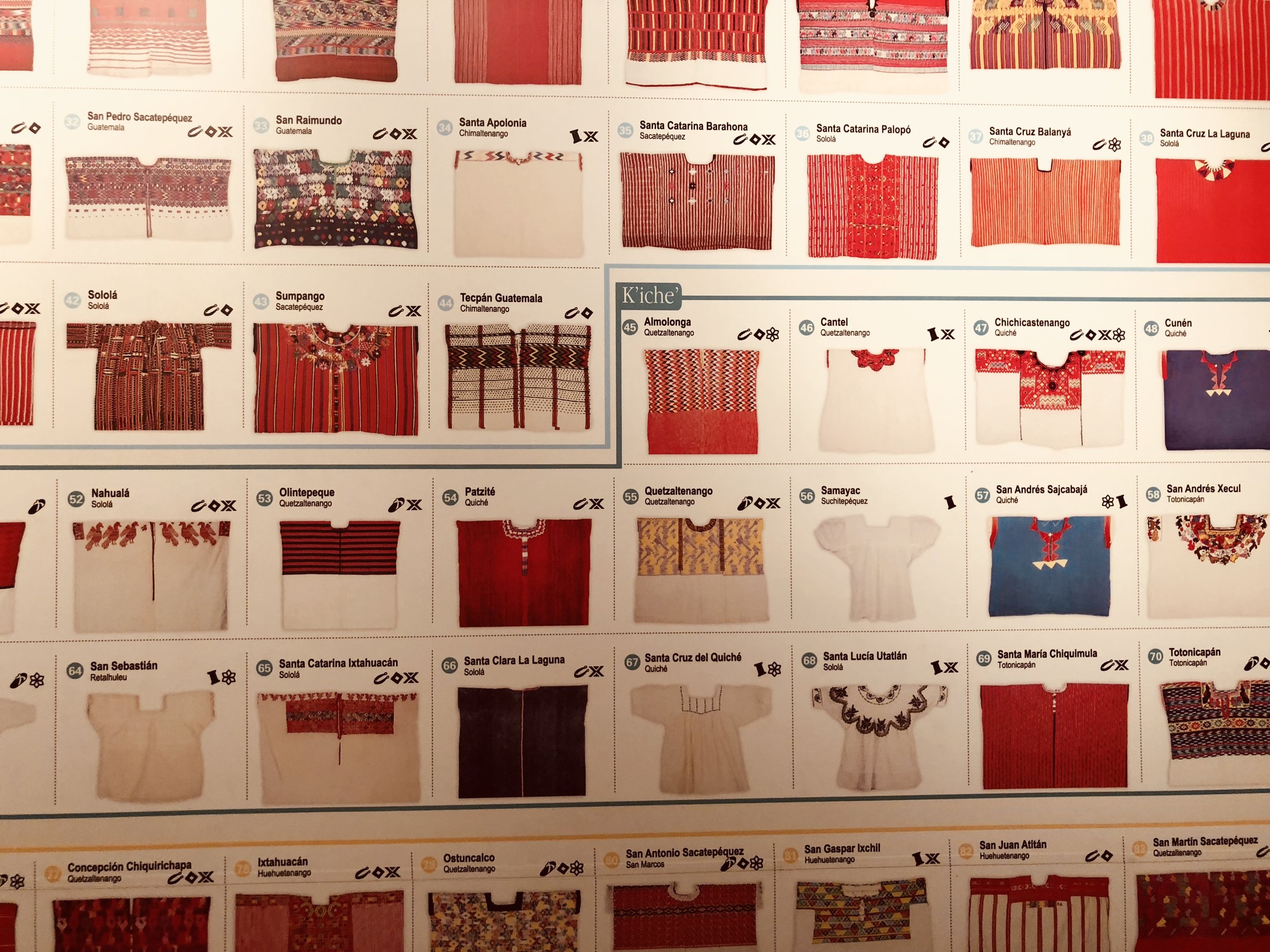“You missed one hell of a show!” I am told again and again by expats and fellow travelers during my first week in Antigua, Guatemala. “On Thursday, the schools closed down and we were on an orange alert,” they inform me. We gaze upon the now peaceful volcanic mountain, one of three that impose themselves upon the Antigua skyline. I had arrived in Guatemala on Feb 4, 2018. The Volcán de Fuego, just 10 miles southwest of the city, had just erupted on February 1, spewing lava down its side and releasing a tower of ash a mile into the sky. Fuego is a stratovolcano, known for being active at a consistent rate. As I settle in for my two week graphic design assignment in Antigua, I wonder what the volcano has in store for the next few weeks.
Antigua, Guatemala rooftop meditation
Guatemala is a land littered with volcanoes. More than 20 dot its landscape from the Pacific shores in the south, across the highlands to the northern Mexican border. Only three are considered active and two of those (Fuego and Pacaya) are right outside of Antigua, my home base. These violent eruptions produce mineral-rich volcanic soil, perfect for growing many of the country’s biggest exports: like coffee, sugar, bananas and cacao. I am visiting Antigua on a two week volunteer graphic design assignment with the USAID’s Partners of the Americas, Farmer to Farmer program. My work branding and designing food packages for a local startup will help support and promote agricultural entrepreneurship in this mineral-rich, resource-poor nation.
Caoba Farms & fresh fruit smoothie from farmers’ market
Historical Clarification
In the courtyard of one of Antigua’s garden restaurants, tropical flowers drip from all surfaces, birds sing and menus are filled with tamale platters, tacos, tropical smoothies and local mezcal. It is hard to imagine that this abundance is in fact a rarity in Guatemala where 80% live in poverty. The drastic inequities become apparent just outside the walls of this quaint, colonial city. The picturesque landscape, mountains, tropical plants, vibrantly colored colonial buildings, ornate churches and patterned textiles belie a history of violence and struggle. Like the still-standing, ruined facades of the 17th century Baroque churches, past traumas still feel present.
Nearly 20 years ago, President Clinton offered a formal apology to the Guatemalan people for the U.S. government’s financial and tactical support of right-wing Guatemalan forces who killed tens of thousands of left-wing guerrillas and thousands of innocent indigenous Mayan people in the process. Tens of Thousands. This was tantamount to genocide. The apology rose out of a 1994 United Nations Historical Clarification or Truth Commission report which investigated the previous 30+ years of violence. According to a 1999 New York Times article, “The commission found that the United States gave money and training to Guatemalan forces that committed acts of genocide against Mayans and other extreme human rights abuses in the conflict, which began in 1960.” In the 80s, those human rights abuses were documented and reported by various human rights organizations at the time. Concerns were flatly ignored by President Reagan. The Program Director at the Washington Office for Latin America said, “Direct U.S. military aid was suspended during the Carter Administration, but then restored by the Reagan Administration, whose Cold War worldview clearly prioritized the fight against insurgents and their civilian supporters over respect for human rights.”
After decades of U.S.-funded civil war and unrest, a peace accord was signed in 1996. Clinton stated, “We must and will…continue to support the peace and reconciliation process in Guatemala.” It is from these ashes a new Guatemala is emerging, but the challenges faced by this recovering nation are as steep as the mountains.
Introducing, Yogi Super Foods
With his silver-streaked beard and fashion scarf, seated in Sukhasana (a yoga meditation pose), Marco Barbi may seem like an unlikely candidate to help kickstart the Guatemalan economy. For starters he is Italian, married to a French astrologist and is himself the author of several personal growth books. He arrived to Guatemala via Mexico over a decade ago, and choose to make the outskirts of Antigua his home. He leads a meditation session every Monday evening on one of Antigua’s many photogenic rooftops, and I attend on my first day in the city. I focus on his rhythmic incantations and try to resolve all of the nervous and excited energy that comes from freshly arriving in a foreign land.
Left to Right: Two Yogi Super Food employees, Marco, Melissa and Andrea (Field Officer with Farmer to Farmer).
Marco, the yogi guru, is on a mission to serve up high quality, health food products to the Guatemalan people and I am happy to have him as my client for the coming weeks. He calls his mostly Guatemalan-sourced products, “super foods” and thusly named his company, “Yogi Super Foods” (YSF). On our first day together, before the rooftop meditation session, we met at his company’s headquarters, that houses his offices and production center. Here we viewed and sampled a variety of his over 40 products such as Raw Chocolate (cocoa beans are not heated above 42°C to maintain nutrients), goji berries, pumpkin seeds, apple cider vinegar drinks, ghee and kombucha.
My role as a graphic designer is to help Marco evolve his brand to have a more consistent and professional look and messaging. Up to this point, the packaging design for this startup was produced by Marco himself, and consisted of a system of black ink clear labels that were applied to kraft bags, jars and bottles. While this was the most inexpensive way to produce labels, it resulted in a few problems:
All the products looking/feeling the same. It was hard to distinguish different items from each other when they were all on a shelf.
Black printing on a clear label worked fine when set against a light color, but was very difficult to read when the product in the clear jar was darker, like a berry kombucha.
There was too much information on the package and not enough hierarchy. Consumers gave feedback that the multiple decorative typefaces gave it a jumbled look that made it difficult to parse information.
Yogi Super Foods original branding, too cluttered
Thanks to a previous volunteer’s work, we had great information about YSF’s current consumer base and market reach. “They are mid to upper socioeconomic consumers. Estimated 60% Guatemalans, 40% Foreigners — predominately North American and European. Most live in Guatemala City or Antigua. Interested in a healthy lifestyle.”
Together, Marco and I created a scope of work that included an overhaul of the full line of packaging products. With over 40 products and only 2 weeks to create something from scratch, we decided that the most efficient thing to do was to instead create a series of templates for every packaging form with some size variations. The templates were: kraft bags (3 sizes), Square jars (2 sizes), 1 Kombucha jar, 1 chocolate bar, and 1 bottled drink.
We finished off the day with a tour of five grocery stores and boutique shops where YSF products were sold to view how the products are displayed and evaluate the design of local competitors. Many local competitor’s packaging designs were very generic and did not reflect local Antigua culture or scenery. I noted that our redesign must include the volcanoes!
View from Bella Vista Coffee
I settled into my hotel and quickly realized that working from my hostel room would have all the comfort of church pews. Thank goodness for the world’s extensive network of digital nomads! I found a multitude of resources online for the best wifi-friendly coffee shops and restaurants to work from remotely in Antigua and I set out test every one. Bella Vista Coffee (aptly named) quickly became a favorite due to their beautiful views, ready outlets and covered patio. Guatemala is in the tropics, so nearly every space has an indoor/outdoor component. At Bella Vista there were private Spanish lessons in session, a local tour company planning their schedule and missionary groups checking in with each other about their week’s challenges. Many languages darted back and forth, and the coffee was served strong and abundantly.
Initial design concepts for kraft bag packaging
Soon, it was clear that my new design direction for YSF was not compatible with the original company logo. The logo was too horizontal, didn’t size down well, and wasn’t available in a vector file format. The tagline of the logo was an afterthought. Marco was attached to the heart element of the current logo and the infinity symbol, but was otherwise open to suggestions. I set to work presenting a new set of logo options along with the packaging redesign, starting with the kraft bags.
Glancing up from my laptop, evaluating the Antigua skyline, I saw my first of several glimpses into Fuego’s activity. A giant plume of smoke and ash billowed from the volcano’s top, evenly growing into a tower.
By the end of the first week, we had settled in on a new logo direction, a new look for the “benefits” icons, and chosen a package design for the kraft bags. We were set up to fully implement the designs across the full product line during the second week. But first, I had volcanoes to climb.
Mock up of redesigned kraft bag for chai tea
New icon set
Pacaya
13,045 ft
Pacaya is the Disneyland of Guatemalan volcano hikes. Large groups of tourists pile into buses and shuttles that run regularly from Antigua to climb (or horseback ride) to the base of a volcano erupting with an Old Faithful-like regularity since 1965. The tourist crowd doesn’t make it less exciting. The hike takes you up a steep path a few miles until you arrive at the first viewpoint. Pacaya didn’t disappoint. She exhaled a solid stream of steam with even force. “If you’re lucky, you’ll hear her pop.” A photographer leans in to tell me as I take in the view for the first time. From the high viewpoint, you wind down and across the real attraction, the lava field. At times this field of lava rock has molten lava seeping through, but today it is all solid rock. Tourists armed with narrow sticks and marshmallows, scout out across the lava field in search of a vent hot enough to roast their confectionery treat. Lava dogs (wild dogs) run in hot pursuit in hopes of catching a dropped treat. Can dogs survive off of dropped marshmallows alone? A rickety sign promised lava art, but the shop was closed for the day.
SNAP, POP, BAM! The mountain, while seeming peaceful, reminds you of its danger.
“Panteras, Panteras!” Our tour guide calls our group by its previously determined name which translates as “Panthers”. The sun is slipping away, and we wind our way back the waiting bus by cell phone light. Before the light of day, I will already be at the base of another prominent Guatemalan volcano, Fuego’s neighbor, Acatenango.
Summiting a 13,045 ft volcanic mountain seemed like no big deal at first. It was 9 miles round trip, which isn’t nothing, but to my Pacific Northwest frequent-hiker mindset, it was easily doable within a day-trip. Then I compared the mountain’s elevation to Oregon’s Mt. Hood and realized that it towered 2,000 ft higher, and I started to panic. While both are volcanic, there are some major differences between Hood and Acatenango, the stratovolcano just South of Antigua. Most importantly, Hood is considered dormant, and is host to 12 glaciers, while Acatenango was last active in 1972 is and barely receives a layer of frost. Acatenango’s lack of glaciers makes is an approachable summit for amateurs like me, but its steep incline and slippery, loose, volcanic rock means it’s no piece of cake.
In order to accomplish the hike in a day, our journey began at 5am. I awoke all ready to go in my hiking gear and met my fellow hikers at the offices of Old Town Outfitters who were to be our guide on this adventure. Unlike in the Pacific Northwest, the vast majority of hikers on the volcano trails were a part of tour groups. This is because travelers tend not to have cars, at least while staying in colonial Antigua, and because trailheads are not well-marked. Once on the trails, they were well maintained, but not well-designed. There were large stretches that should have been switchbacks, but rather the trail ran straight up the mountain. Our group consisted of two Parisians, two Norwegians, two Guatemalan tour guides and me. At 6am we took our first steps up the great volcano.
“Do you want some coffee?” It was 7:30am and those five words were not at all what I was expecting as we rounded a bend over mile into our hike, after the steepest incline of the whole trip. Like a mirage, a small shelter staffed by a few Guatemalans, who must have camped the night before, came into focus. They lorded over a big vat of boiling coffee. They were preparing for the day’s hikers, and it seemed we were their first batch of customers. Being that they had a captive audience of exhausted hikers in need of a caffeine fix, it would stand to reason that their coffee would be appropriately expensive. After all, didn’t they hike up here with all of this cooking equipment? “5 Quetzales” they say. This amounts to about 71 cents in US dollars. My eyes widened and I immediately forked over my money. My cup was ladled and for the first time since we started hiking, I took a deep breath and enjoyed the scenery.
Summit grasses and high alpine forest
View of Fuego from summit of Acatenango
The hike spanned four ecosystems. We started in the lowland, agricultural zone, with corn crops and calla lillies lining the trail out of a small rural village. By the time I had the coffee, we were already entering the second zone: the cloud forest. Central and South American “cloud forests” are misty, moist forests that remind me much of the Pacific Northwest with droopy mosses, dense vegetation and low fog. Remarkably, zone three switched dramatically to a high alpine forest more reminiscent of the high deserts of the American West with dry pine needles and grasses. Finally, we emerged from above the treeline to zone four, close the summit. This zone was bone dry, with very little vegetation save for a few shrubs and some stubborn lichen. When hiking, each step needed to be carefully plotted so as to allow for the least amount of slipping on the crumbly rocks. Fortunately, the steep climb and high altitude left plenty of excuses for our group to stop and take a breather. The clouds seemed to gain speed at high elevations, sweeping through the summit when we arrived.
The summit was a wide-mouthed crater that our crew encircled in full before descending to the center where our guides had prepared our picnic lunch in a spot shielded from the wind. The bird’s-eye view spread out 360 degrees, but the real treat was the summit’s front row seat of Fuego. Days earlier I was enjoying coffee at Bella Vista gazing up on the exploding wonder, and now here I was looking down on it. Acatenango is the sister volcano to Fuego, they are adjoined by a little ledge and overzealous hikers could in theory summit both in one day. But Fuego’s recent tantrums made that idea inadvisable, and we were content to view her from our high perch. While we were at the summit we saw a slight wisp from Fuego, like a small exhale after an eventful week.
Our guide holds up his hands to us, cupping a pile of volcanic rock. “Here, touch this. It is hot.” One by one, we cover our hands over the dirt. Sure enough the rocks feel as though they have been in an oven. I imagined the molten earth churning directly beneath my feet, and suddenly the rocks at the summit didn’t feel so solid. We trod back down the mountain, sliding on the deep ash deposits, marching through the alpine forest and cloud forest and giving knowing nods to hikers on their way up.
Back with the uneven Antiguan cobblestones beneath my aching feet, I feel exhausted but accomplished. I check into my new room at Hotel Selina, which promises to be more lively than my previous accommodations. With the mountain I just climbed in perfect view from my balcony, I pull the curtains and take a well-earned nap.
The Sun Sets on Antigua
I kick off week two with a new appreciation for the volcanic mountains that form the base of the designs. The work week offers more opportunities for mobile office coffee and café explorations. Most notably, was Fernando’s Kaffee, which makes it own chocolate onsite and roasts their own coffee. Like many establishments, Fernando’s doesn’t look like much until you wind through their gift shop, stroll past the chocolate makers in action, and arrive at their gorgeous garden courtyard. Fernando himself makes the rounds, ensuring all customers are cared for, taking time to pet his aging café cat, Misha, who is curled up on a chair in the sun. A Mayan woman weaves in the center of the courtyard, demonstrating the backstrap style loom. Her bright textile creations are spread out before her. With the hum of café conversation and wafts of chocolate from their factory enticing me with every breeze, I work on expanding the approved design for the kraft bags across the full product line.
By Friday, Marco and I are putting the finishing touches on the full set of packaging templates. We meet with his web developer. While website design is not in the scope of work for this assignment, we agree on some strategies, show him the work and agree to share assets. YSF’s new designs may not hit shelves for some time, but Marco can start implementing some digital design pieces sooner. My objective is give Marco as many assets that he can use on his own to help build up his new brand.
I include a “yogi” illustration of Marco himself with his tagline that can be used as a sticker on packaging and draw a more clear association between the food brand and his “Happy Soul Messages.” Marco’s messages, are small folded cards with inspirational and empowering notes that pair with his meditation classes (his larger Happy Soul Project). I urge Marco to continue these messages as a way to help build brand loyalty and trust. I design a template for him so that future cards match the new aesthetic and integrate the cards into the packaging design so that a message is revealed when you pull off the card. I also recommended adopting the hashtag #yogihappysoul for future Instagram marketing. It is daunting to start a company from scratch as Marco has, and overhauling the branding, messaging and marketing to a more professional level will take awhile. But Marco knows what he needs to do, and hopefully he is set up to make a giant leap forward in that regard.
It was hard to leave Antigua. The city was feeling extra festive as Ash Wednesday passed, kicking off the month of Lent. Across town, unique religious vigils were held. All week there were fireworks in celebration. Puppets called gigantes were propped up in formation outside of a church, awaiting their time to be called to perform.
I race up to Cerro de la Cruz, a hill just north of town with sweeping views of the city. The clouds hug close to Volcán de Agua’s peak. Night falls, and my last day in Antigua comes to an end.
Midnight Snacks and Scenes of a Drug Trip
It’s midnight and I am feeling groggy after taking a few more melatonin pills than I am used to. The overnight bus I am riding, whose rhythms had had just lulled me into a drowsy sleep state, has come to a sudden halt. I examine my surroundings through eyes uncorrected by contacts. We appear to be on the moon. Or possibly some sort of high-walled moon-like canyon. No signs of green, just eerie gray rock piles in a yellow light. A trucker pulls alongside our bus and our driver gets off to have a long chat, but I can see no sign of what is the cause of our delay. No traffic jam, no accident. We are not at a rest stop. Then the bus doors burst open and in streams four women and two children bent on serving this bus full of sleeping passengers a variety of processed snacks pulled from their blue buckets. Imagine their sales pitches similar to ones you might find at baseball game, but in Spanish. The man next to me pulls his blanket tighter. The snoring man across the aisle is jolted awake. I judge that the saleswomen get a few takers by the sound of crinkly chip bags opening around me. Meanwhile my attention is diverted to a scene playing out before my window.
In the hazy light I see that a motorcycle with two men on board has pulled to a stop next to us and there are suddenly three young women surrounding it. Quickly I notice something strange about the women. Maybe it’s my contact-free eyes or the melatonin, but the women seem to be acting erratically, shrieking laughing, groping, touching each other. Falling over one another, stroking each other and grabbing at the men on the bike. It’s as if I am watching an old silent movie where the characters move at an accelerated frame rate. I suspect I’m witnessing a drug trip, that wasn’t going well. One of the women is clearly moving from hysteric laughing into hysteria. She is having trouble standing upright, she is crying, her arms grasping wildly. The other women at times seem to console her, and at times seem to mock her. It is a hard scene to decipher.
Then one woman takes out her water bottle and dumps its contents onto the distraught woman’s head.
This seems to help settle her down, and she remains upright but rather limp. The men on the motorcycle shift forward and back as if they’ve seen enough. They take off in a cloud of dust and the three women stumble out of my vision. After a 45 minute stop, our bus roars to life and I realize I’ve been gripping my armrests.
Tikal, Guatemala
The Lost World
Assuming the Jungle Cruise at Disneyland doesn’t count, I have never before experienced a jungle. I grew up in the Arizona desert, I live in the Pacific Northwest rainforest. I have hiked in the Alps, and in South America’s cloud forests, but the jungle was a mystery to me. I had arrived in Northern Guatemala via an eight hour overnight bus from Guatemala City and now, after two shuttle rides, was stationed in the beautiful Jungle Lodge right outside of the mystical ruins of Tikal. As promised, the Jungle Lodge was indeed in the middle of the jungle, designed as a basecamp for anthropologists who arrive to study the great Mayan ruins.
Maya Biosphere Reserve
Once the center of a great Mayan urban empire, Tikal consists of thousands of structures and monuments, only a small portion of which have been released from the jungle’s grasp since its discovery in the 1800s. It is very remote. To get there most tourists bus or fly into the tiny town of Flores, and then hop on a tourist shuttle for a one hour ride to the entrance. The system for payment upon park entry is confusing and dated. It is difficult to find good information about how to get a guide, and no level of accountability for the type of guide you’re going to get. The signage is faded and slim. It is a shame that a site this important and historic seems drastically underfunded.
Temple I and the Great Plaza
My first visit to Tikal on day one involved a very awkward encounter with my private guide ( arranged by my hotel) who at one point inappropriately grabbed and held my hand, smacked mosquitos dead across my body, and invited me to have dinner with him later that evening. He provided very little actual information, and I had to quicken my pace to keep up with him. The experience was somewhat redeemed, however, when alone on a quiet jungle path, he let out a wild, croaking, barking noise. Right as I was about to say, “Bless You?” the jungle responded for me. About 10 or more howler monkeys came alive from just beyond our vision. They were hooting and hollering, croaking and barking, and honestly there are no words to describe their sounds. My jaw dropped in amazement, staring into the dense jungle. By the time I looked back up the trail, my guide/monkey-communicator was 10 steps ahead of me on the path, and I had to rush to catch up, swatting mosquitos as I went.
On day two I was eager to explore the mystical site without any help from a handsy monkey-caller.
I had a map and general understanding of the layout from yesterday’s whirlwind tour. I spent quiet, alone time at Lost World Pyramid, Temple VI (aka Temple of the Inscriptions) and the Palace Acanaladuras, truly surprised at the lack of tourists for a Sunday afternoon. The site is sprawling and I would often go a half hour without seeing another human. The Great Plaza was the most heavily-visited, and for good reason. The iconic Temple 1 (or Temple of the Great Jaguar) is the most Instagram-worthy. It is dated at approximately 732 AD and rises up steeply to 154 ft.
“We Guatemalans always knew this was here,” my guide had explained. It was reported the week before my trip that new laser technology had produced a scan of Tikal that revealed it was much larger, more complex and inter-connected than previously estimated. The Mayan people had an extensive system of canals (Tikal translates to at the waterhole) connecting sites like Tikal to surrounding communities. They traded up and down the coastline to settlements in Belize and Mexico. The residents of Tikal lived far from the temples and their wooden homes have long been absorbed by the jungle. Evidence of agriculture and ceramic pieces remain revealing that an average Mayan’s home garden around their thatch-roofed homes provided much of their sustenance. Traded goods like salt and cacao supplemented their diet. There is still so much to be learned here. Along the paths, pyramid-like jungle shapes rise up from the Earth begging explanation. Tikal was “discovered” in the 1840s by an American and British explorers. But to the residents of the Petén region, the site of the “Lost World” was never really lost.
Jungle trails in Tikal
Alone on a jungle path I walked abnormally slow. The environment was alive, rustling with life. Spider monkeys were swinging from high branches. A coati scampers across my path avoiding my camera’s capture. The animals that I can’t see, I can hear just beyond my view: the howler monkeys, and innumerable, unknown birds. Stop in one place for too long and the mosquitos will swarm and the giant red ants will consume your sandal. This is a region of tarantulas, black panthers and other mysterious creatures I’ve only seen in zoos. These are endangered places. After Brazil, Guatemala, has South America’s second-largest rainforest cover. But it is also losing its rainforest at the fastest rate. According to Mongabay, “Guatemala’s rural population is among the poorest in Central America. As such, people’s day-to-day survival is dependent upon natural resource use. Most rural Guatemalans have few employment options; they must live off the land that surrounds them making use of whatever resources they can find. Their poverty and relative lack of opportunity mean the country’s forests are falling at one of the highest rates in Latin America.” This makes these remote places, teeming with life, that much more precious.
Montezuma Oropendola birds feeding
Returning to the Urban Jungle
I stroll the graffiti-laden, commercialized streets of Guatemala City feeling the stark contrast to the previous day’s jungle explorations. Two women make tortillas on a circular, flat grill streetside, surrounded by boxes of bananas and other fruits. A dog sleeps on the roof of a small school, where children play in the courtyard. Even in this urban jungle, there is a soothing rhythm to Guatemala and I am honored to feel a part of it.
Guatemala City graffiti
View all work for Yogi Super Foods.
View full set of Antigua & Guatemala City photos.
View full set of Tikal & Flores Guatemala photos.
Thank you to Partners of the Americas, Farmer-to-Farmer program for granting me this opportunity.

